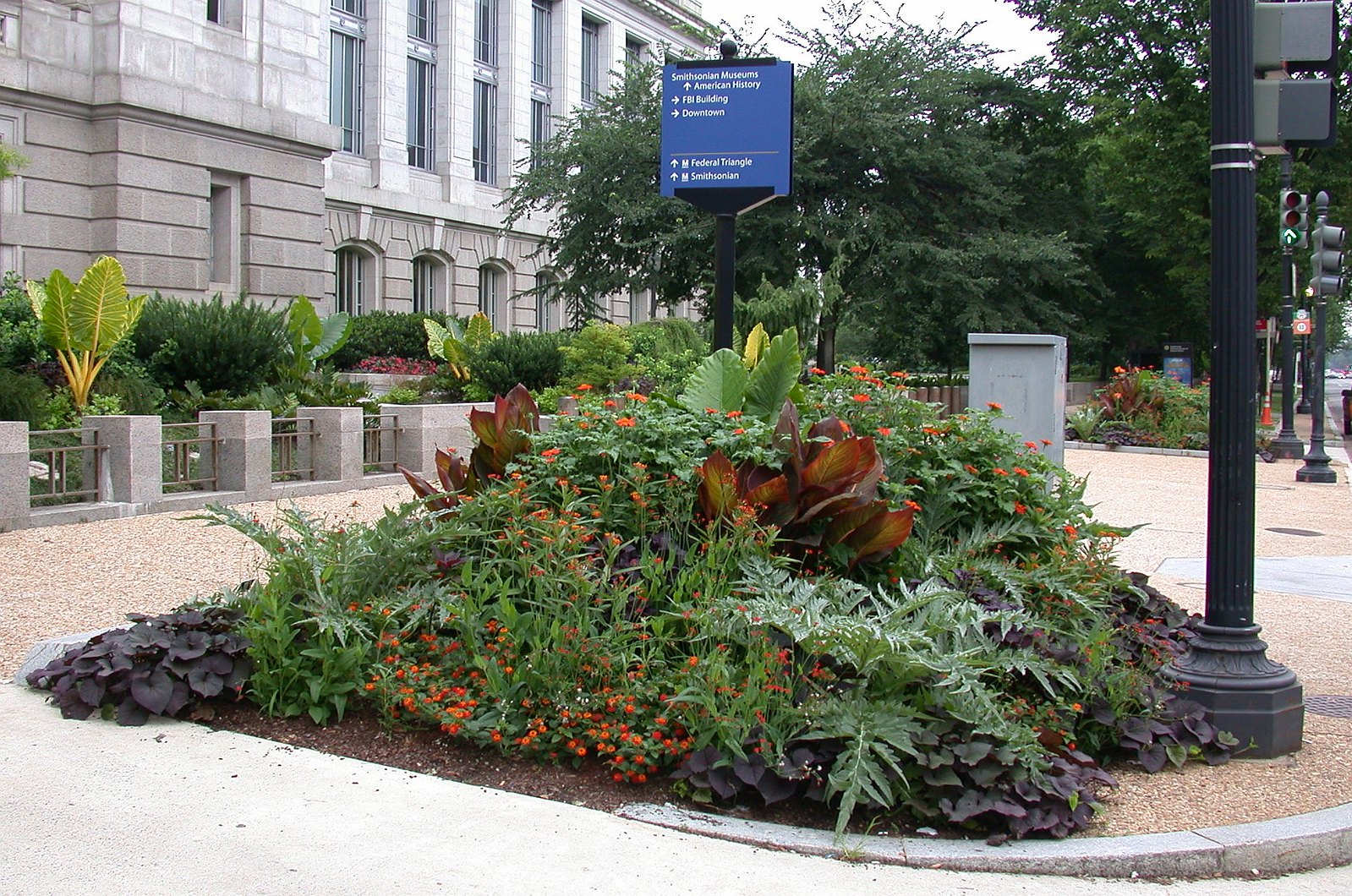
National Museum of Natural History (Constitution Avenue entrance)
I'm privileged to work at the Smithsonian's National Museum of Natural History in Washington, DC and a beautiful garden greets me as I arrive at work every morning. As the summer gets hotter and hotter, it just keeps getting better and better. I know a lot of people don't like the heat and humidity of a Washington, DC summer but this is when our public gardens really start to hit their stride. Don't get me wrong, I love spring gardens with their tulips, daffodils, peonies, bleeding heart, foxglove, poppies, and bluebells, but by mid-summer, most of these plants look the worse for wear. Some of them, like oriental poppies, bleeding heart, and most spring bulbs, have the good sense to go dormant in our summer heat but gardens that depend too heavily on these spring-flowering plants aren't worth seeing the rest of the year.
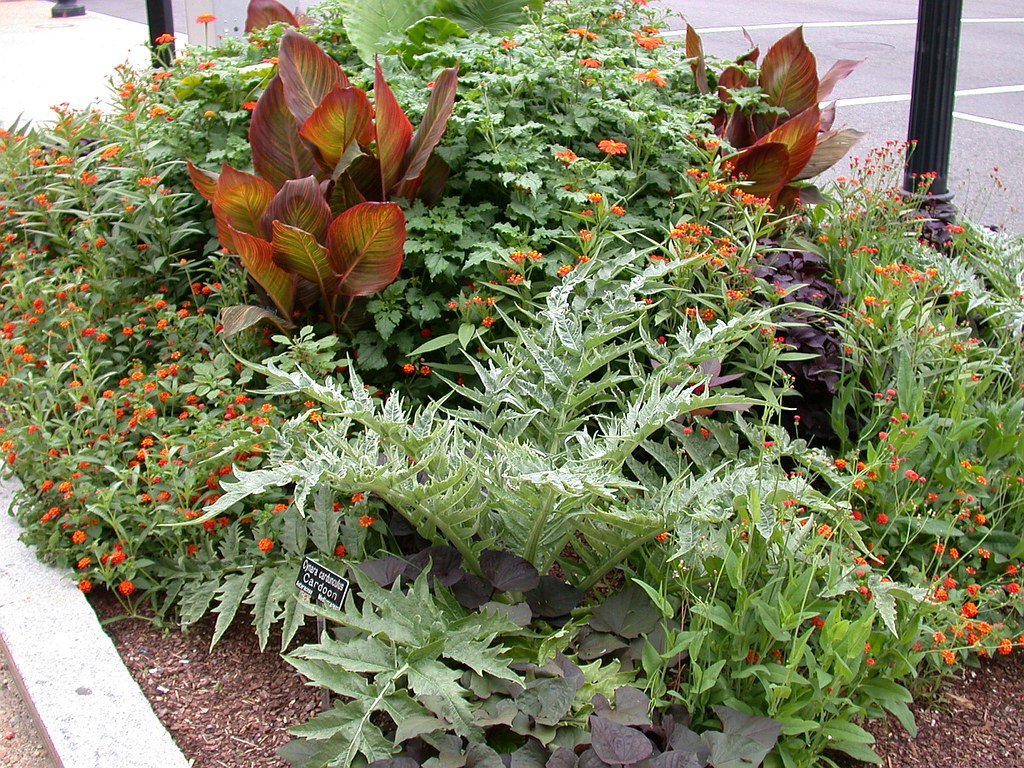
Cardoon (Cynara cardunculus) plays well with tropicals
In Washington, DC we've embraced our subtropical summers. Tropical and subtropical plants are widely used in our gardens, in part because they do so well here and in part because summer is tourist season and public gardens need to look good. If you just can't bear our summers (and I can't say I blame you), come in September or early October, when temperatures are much more pleasant and most of the gardens are still looking fabulous. Moreover, many of our gardens are a treasure trove of rare and unusual plants that you might not see elsewhere. (Seriously, a variegated cattail? Who knew?)
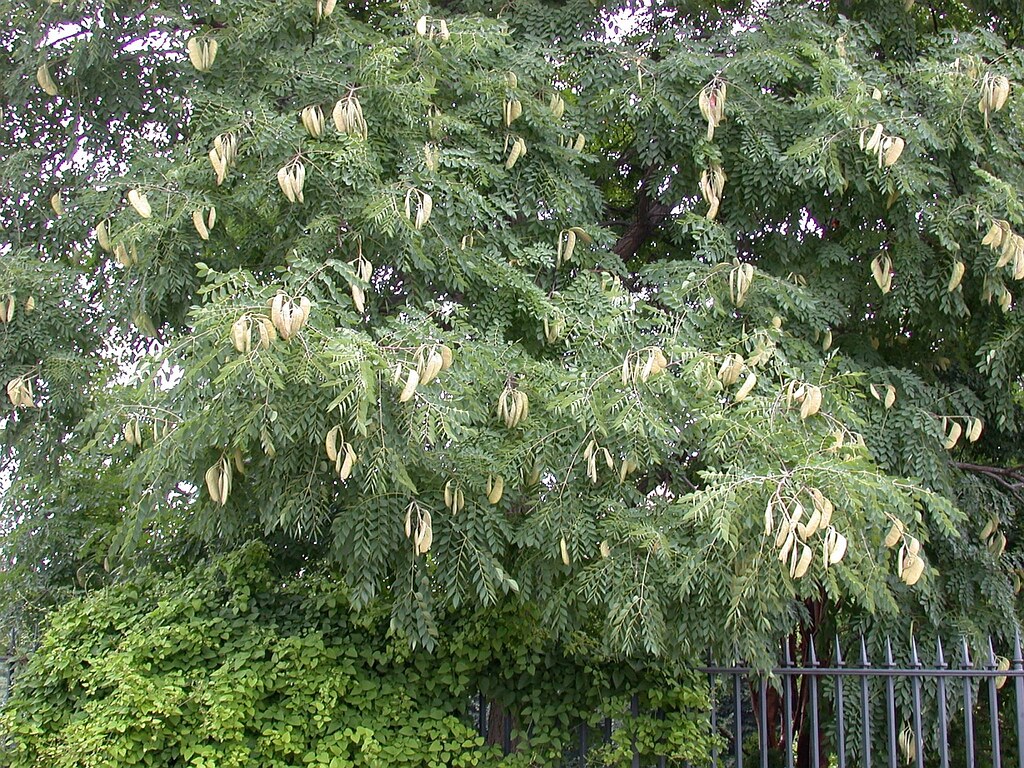
Kentucky coffeetree (Gymnocladus dioicus), National Gallery of Art Sculpture Garden
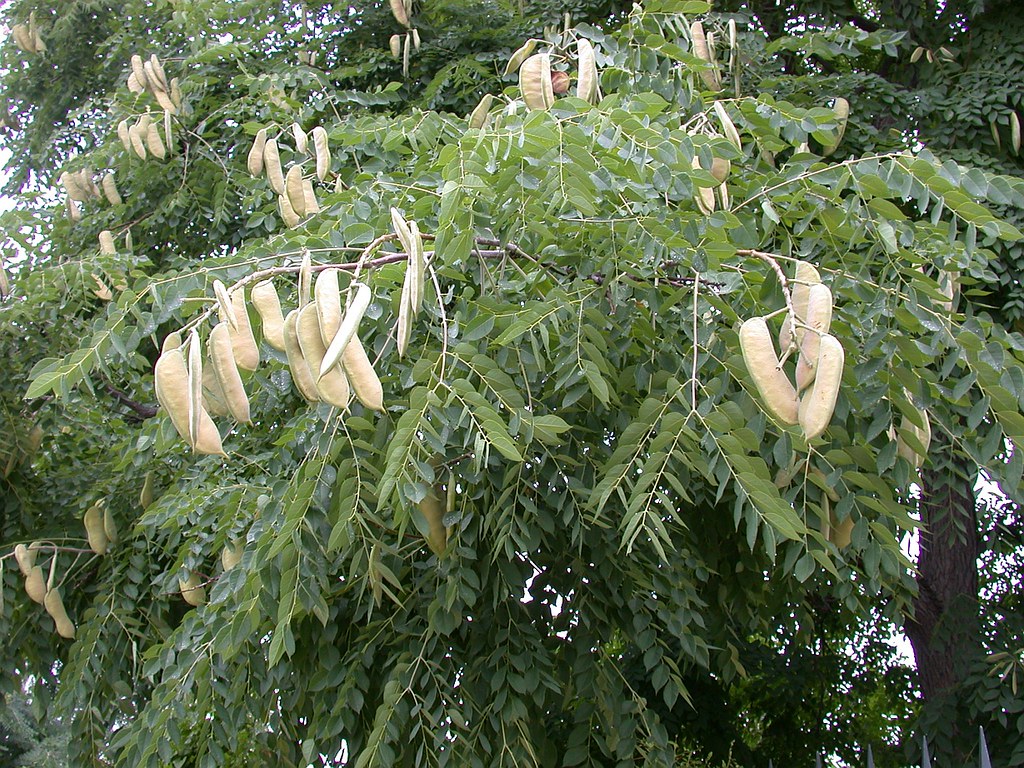
Kentucky coffeetree fruits
I spent an afternoon last week wandering around some of our great gardens on the National Mall. Sure, I got all hot and sweaty, but it was worth it. For a cheap and easy (and air conditioned!) way to see the downtown gardens, see local garden blogger Susan Harris's blog post, Gardens along the Circulator’s National Mall Route (as well as her follow-up Gardener’s Guide to the National Mall on her home blog, Garden Rant).
National Garden (United States Botanic Garden)
I started at the National Garden, part of the United States Botanic Garden (USBG) and one of the younger gardens on the National Mall. At less than 10 years old, this 3 acre garden is maturing nicely. The naturalistic plantings, incorporating many native plants and both standing and running water, are attractive to butterflies and birds; on my recent visit I saw numerous birds bathing in the small artificial stream that runs through the garden. Another of the USBG's gardens, Bartholdi Park across Independence Avenue, is also well worth a visit. During a family visit to DC about 45 years ago, the USBG conservatory impressed me immensely but these outdoor gardens, together with some nicely planted beds at the front entrance, represent a much-needed emergence of the USBG from its original conservatory shell. The USBG is often mistaken for part of the Smithsonian Institution, but it's a completely separate entity administered by the Architect of the Capitol.
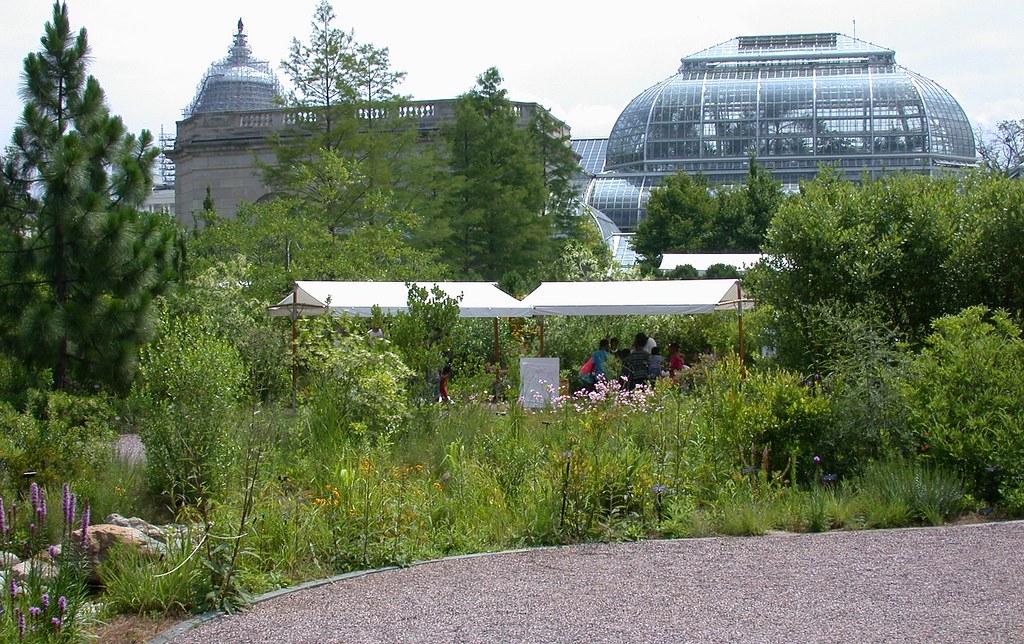
Capitol dome (left) and USBG conservatory (right)
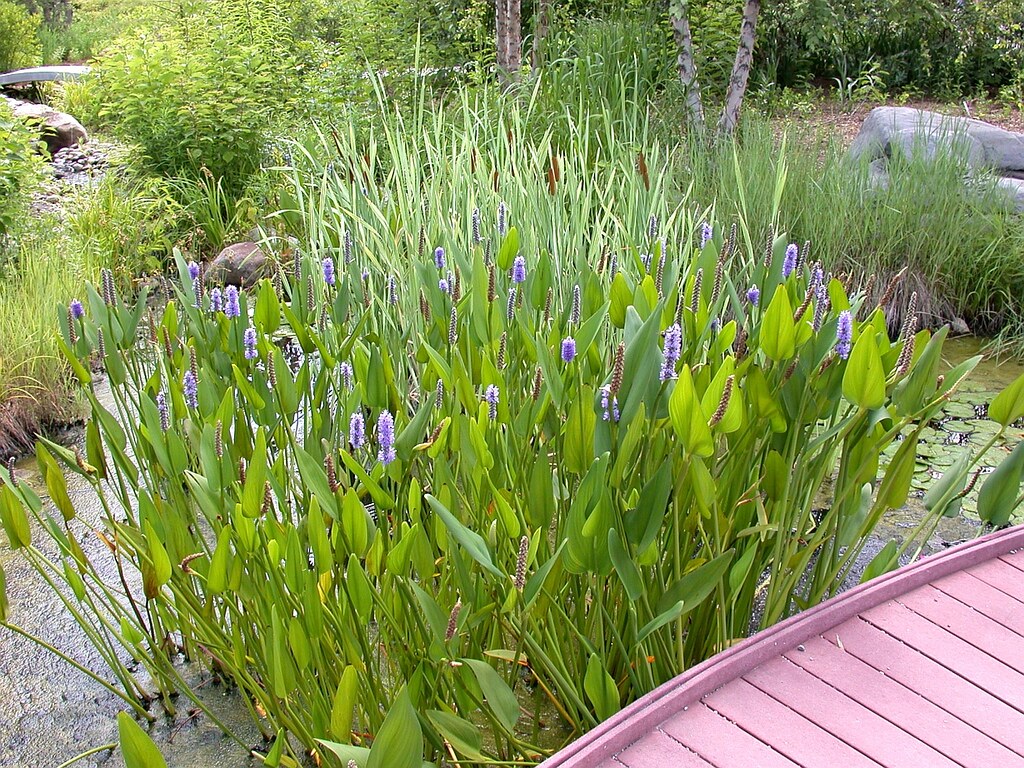
Water garden
Pickerelweed (Pontederia cordata)
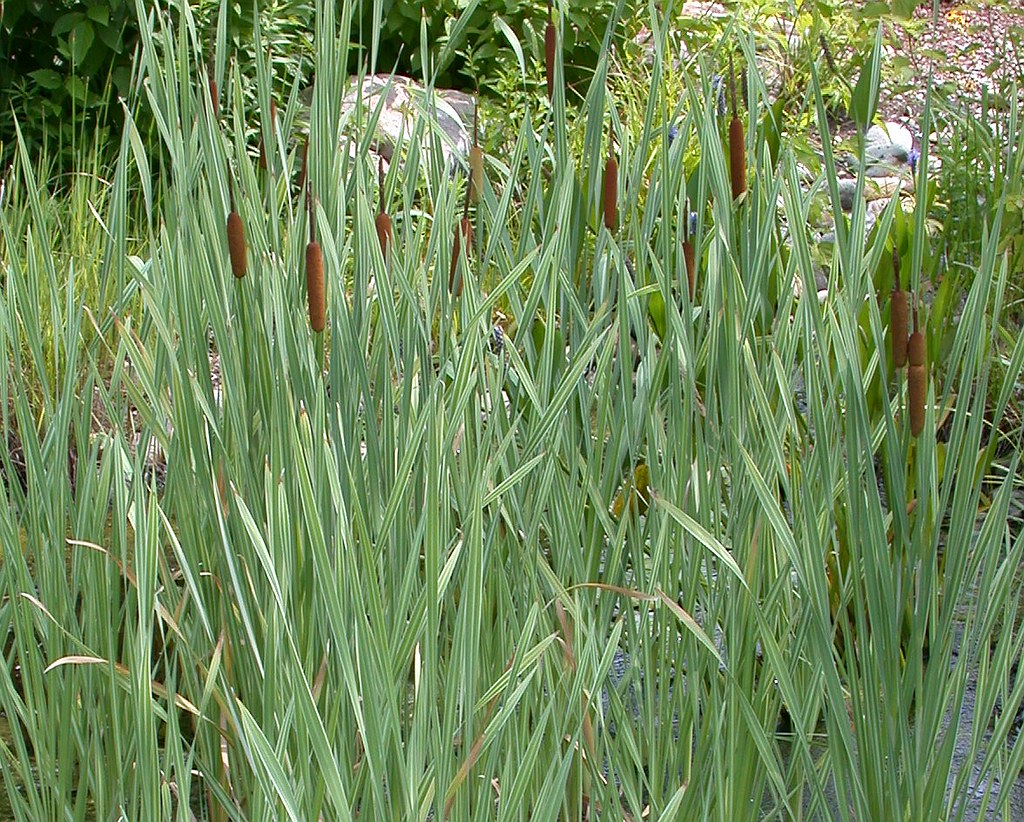
Variegated cattail! (Typha latifolia 'Variegata')
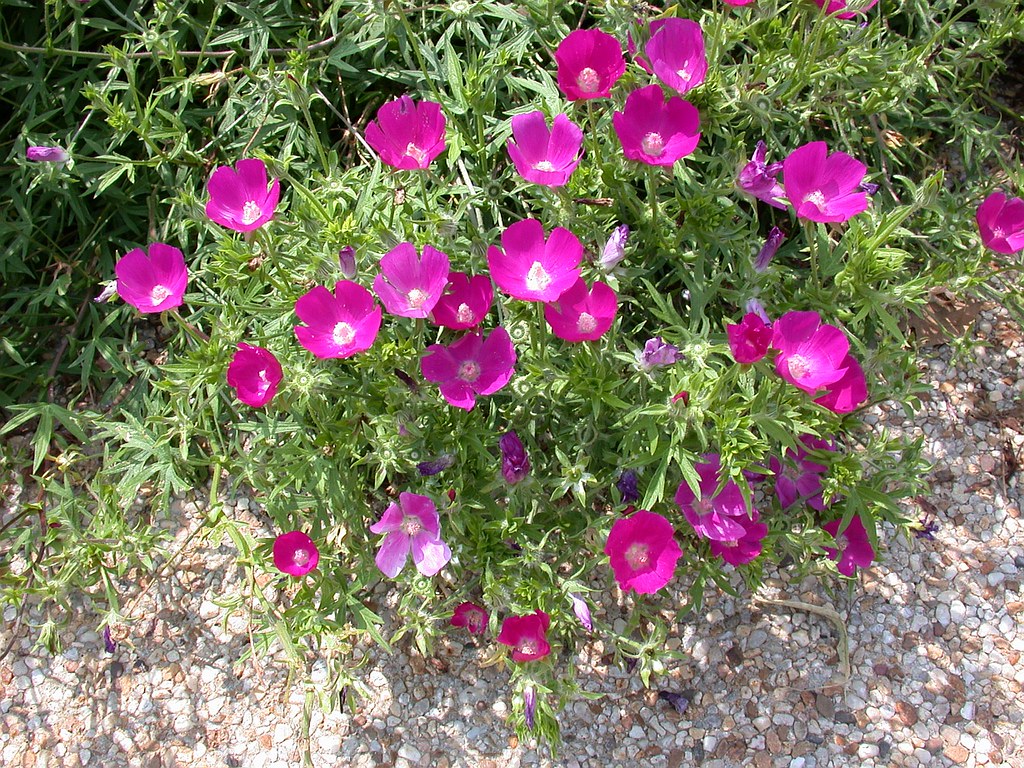
Winecups (Callirhoe involucrata)
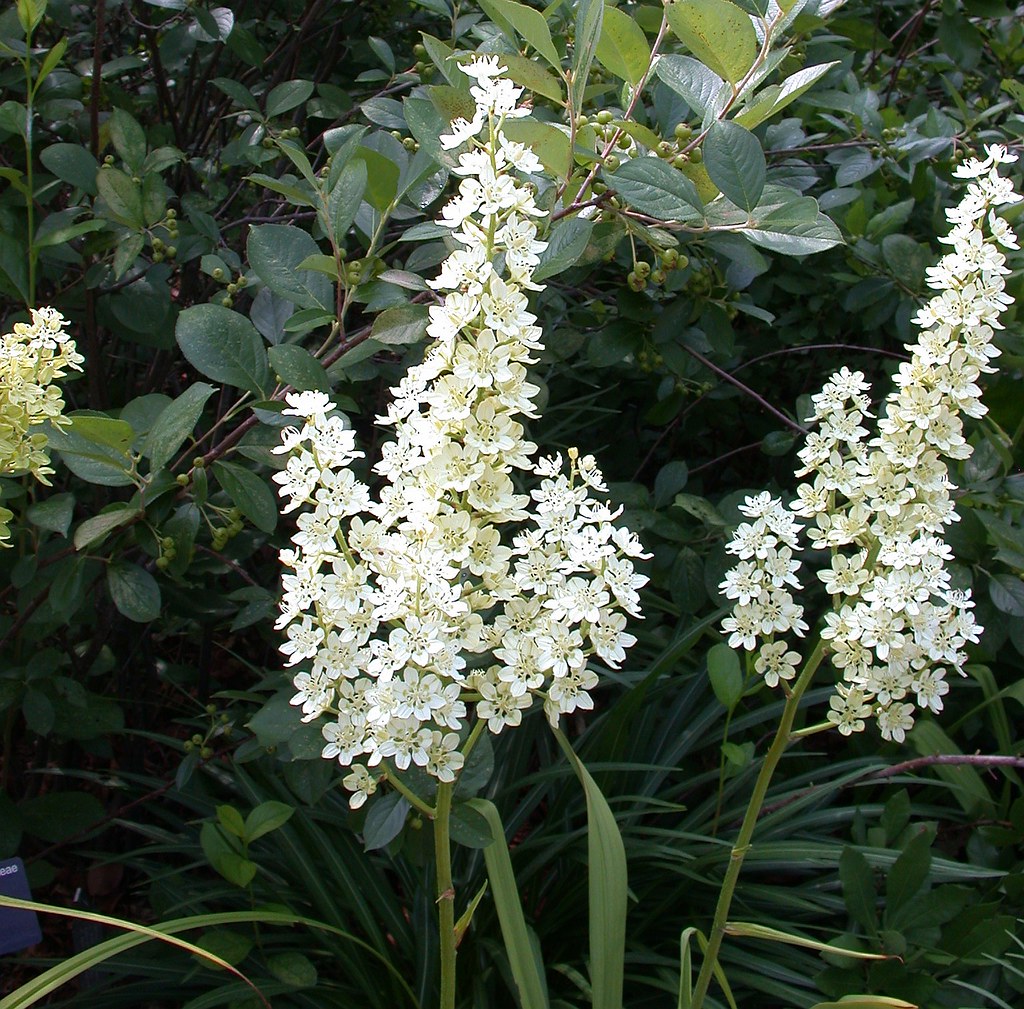
Melanthium virginicum (labeled as Veratrum virginicum)
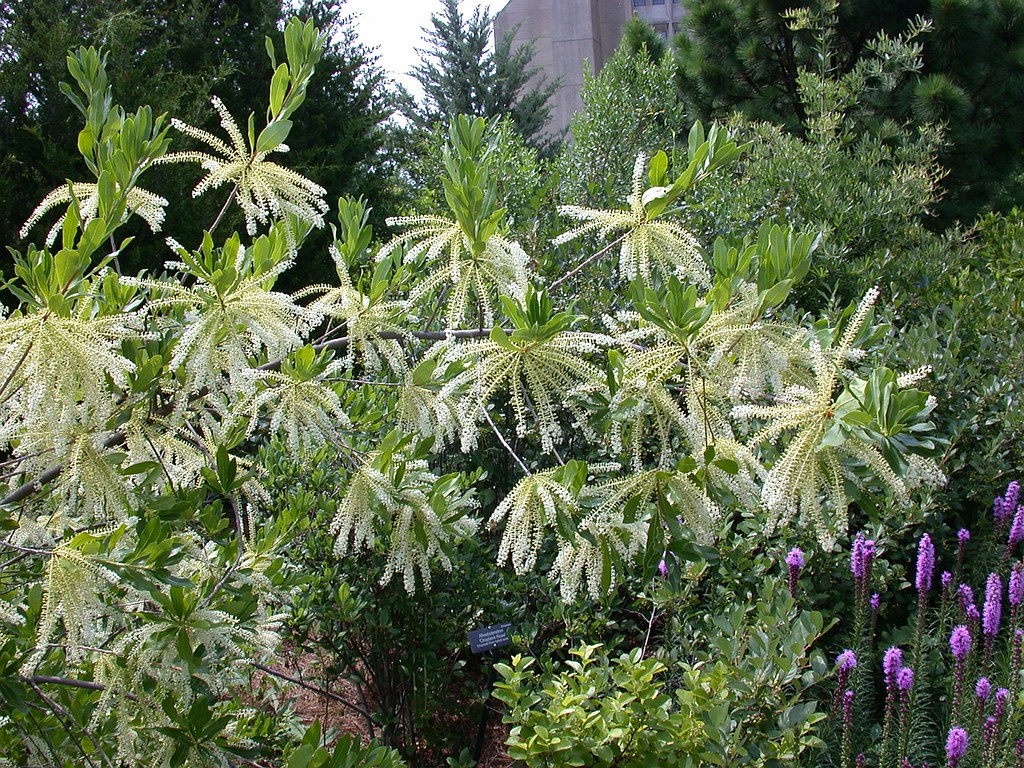
Cyrilla racemiflora
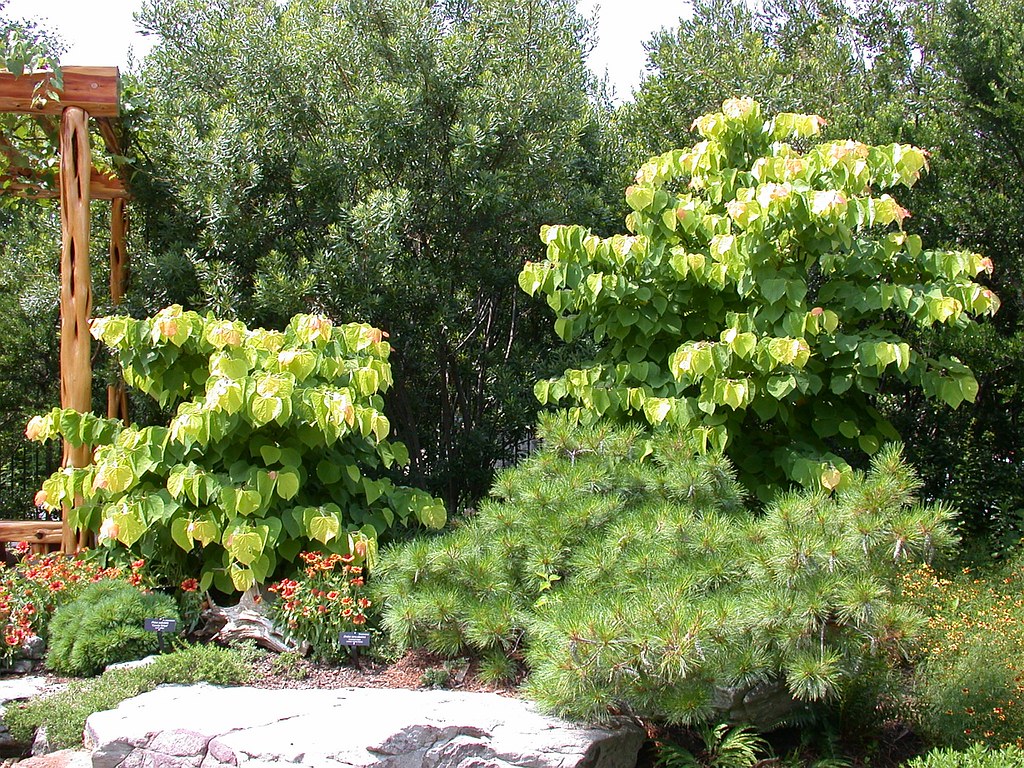
A "golden" redbud, Cercis canadensis 'Rising Sun'
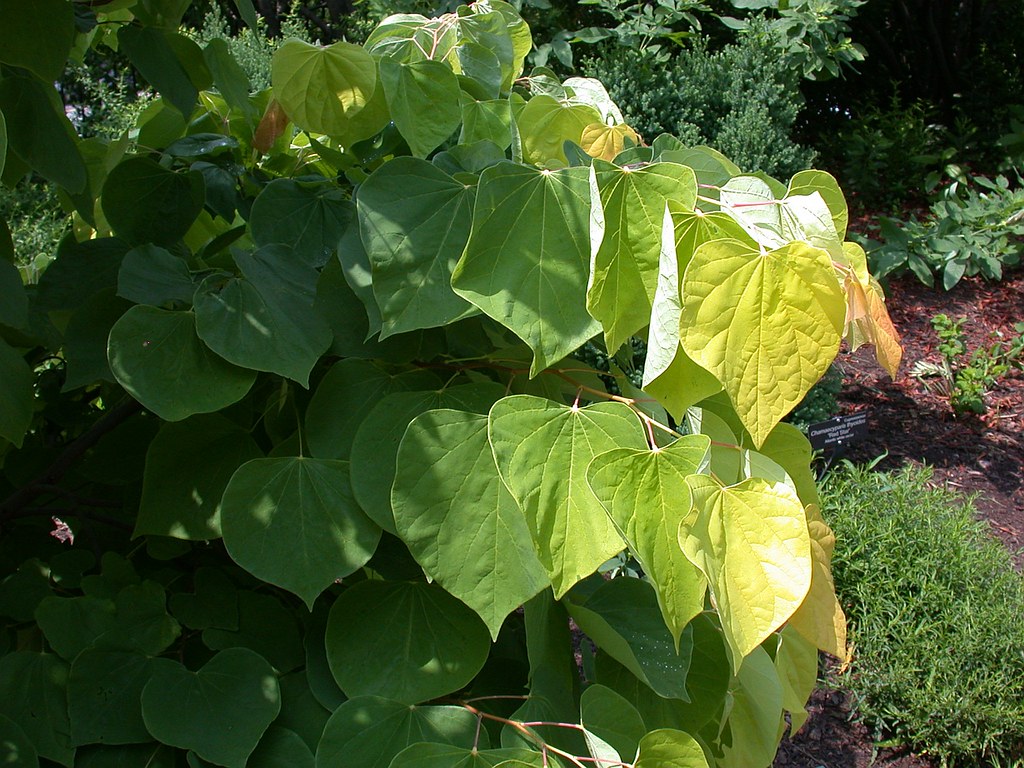
Cercis canadensis 'Rising Sun'
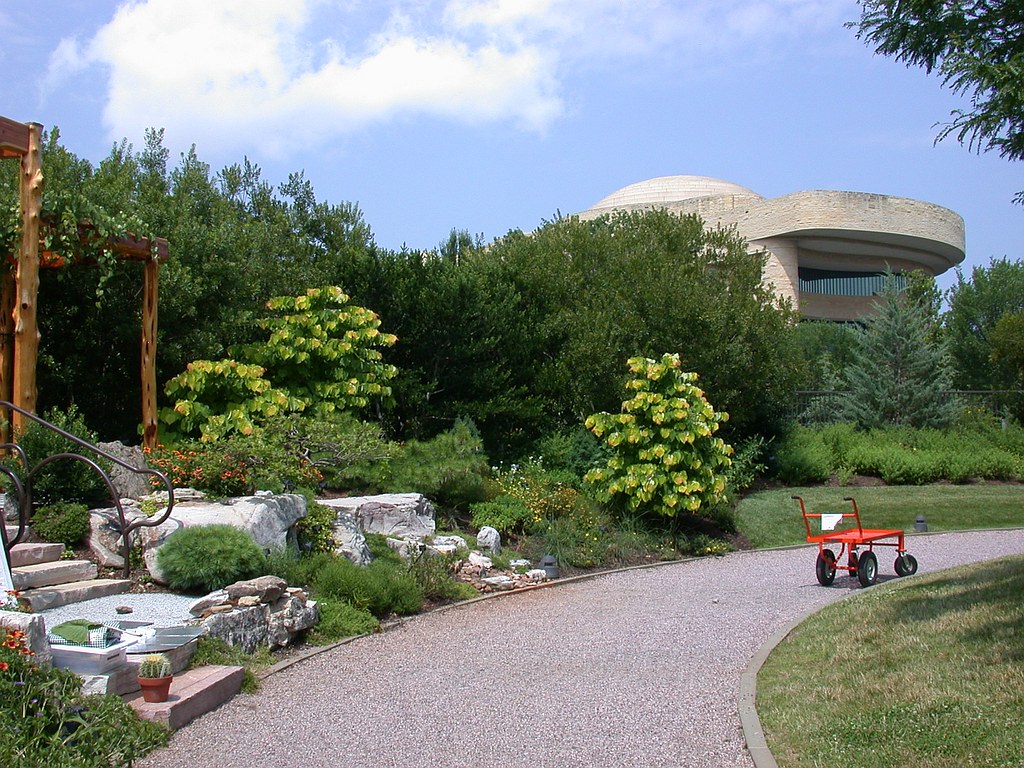
National Museum of the American Indian rising above the trees
National Museum of the American Indian (Smithsonian Institution)
The National Museum of the American Indian, which opened in 2004, is one of the more unusual buildings on the National Mall. When it was first built, I thought its architecture was incongruous with the rest of the Mall but since then it's really grown on me. Its undulating limestone-clad walls evoke wind- and water-worn cliffs and its grounds are meant to connect it to the natural world. Trees and shrubs separating it from the Mall provide a sense of privacy. The surrounding grounds feature both standing and running water, planted heavily with native species as well as plants that are important crops for Native Americans. Go inside to discover one of the best restaurants on the Mall, Mitsitam Café.
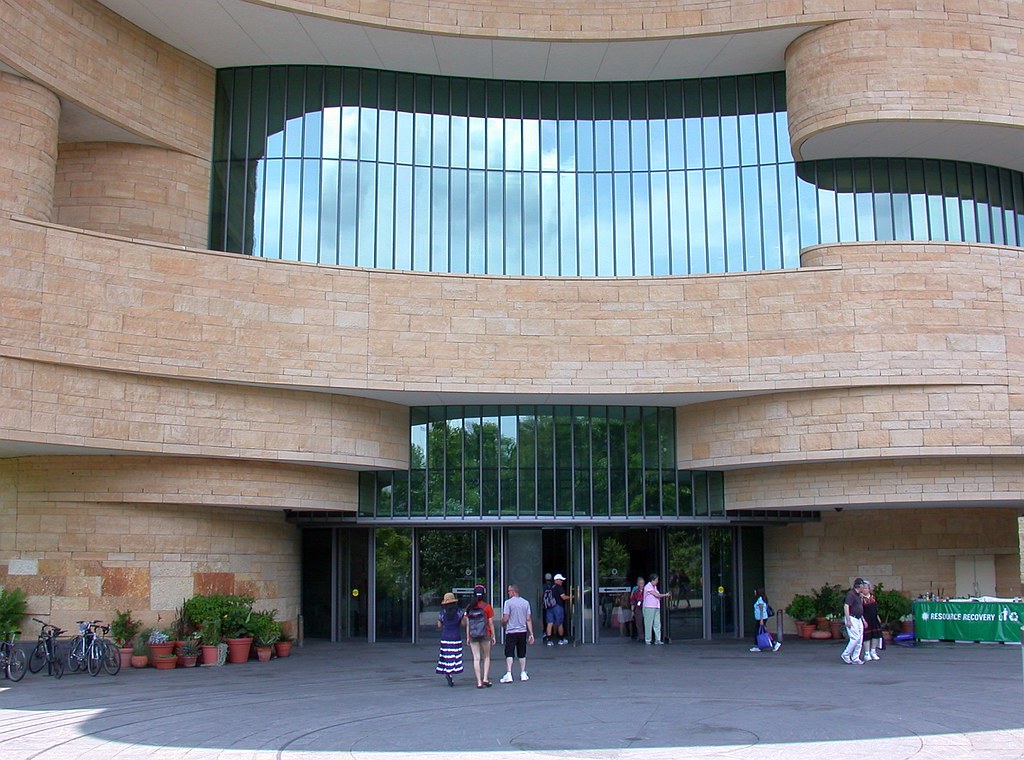 Main entrance
Main entrance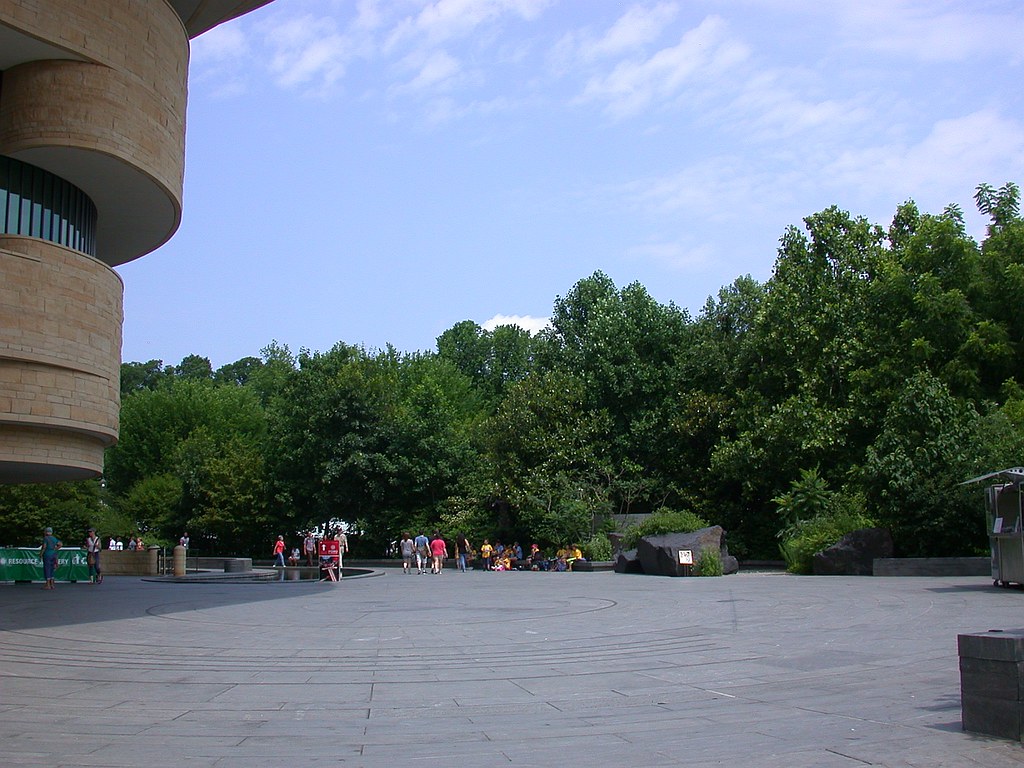
Entrance plaza
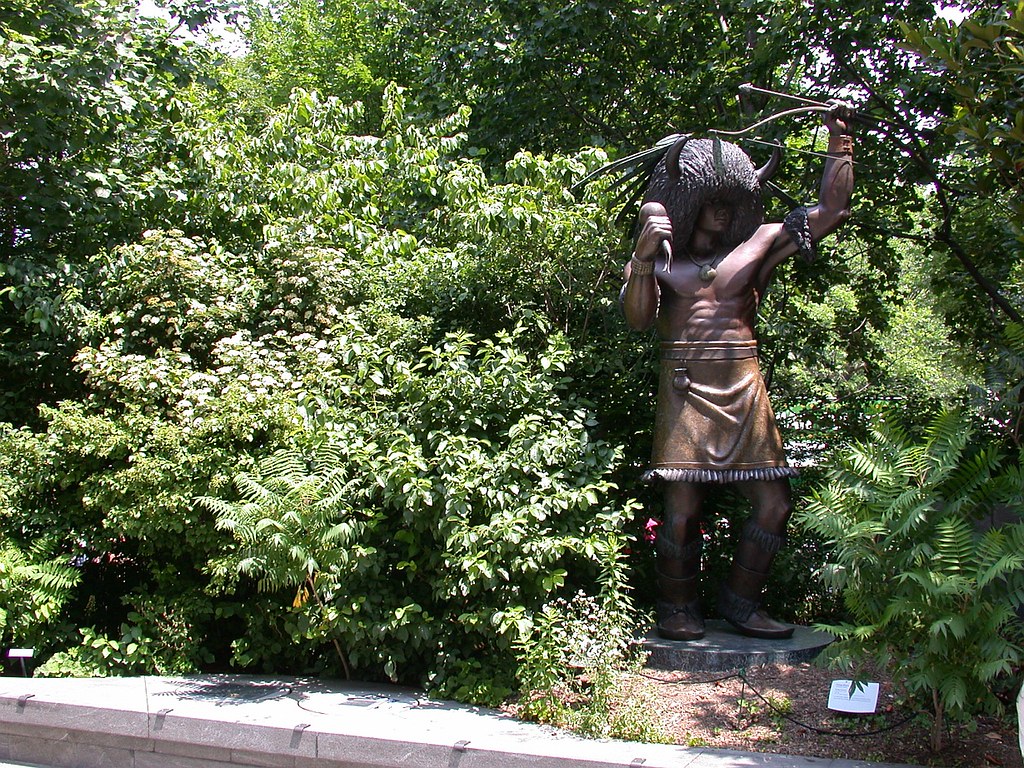
"Buffalo Dancer II"
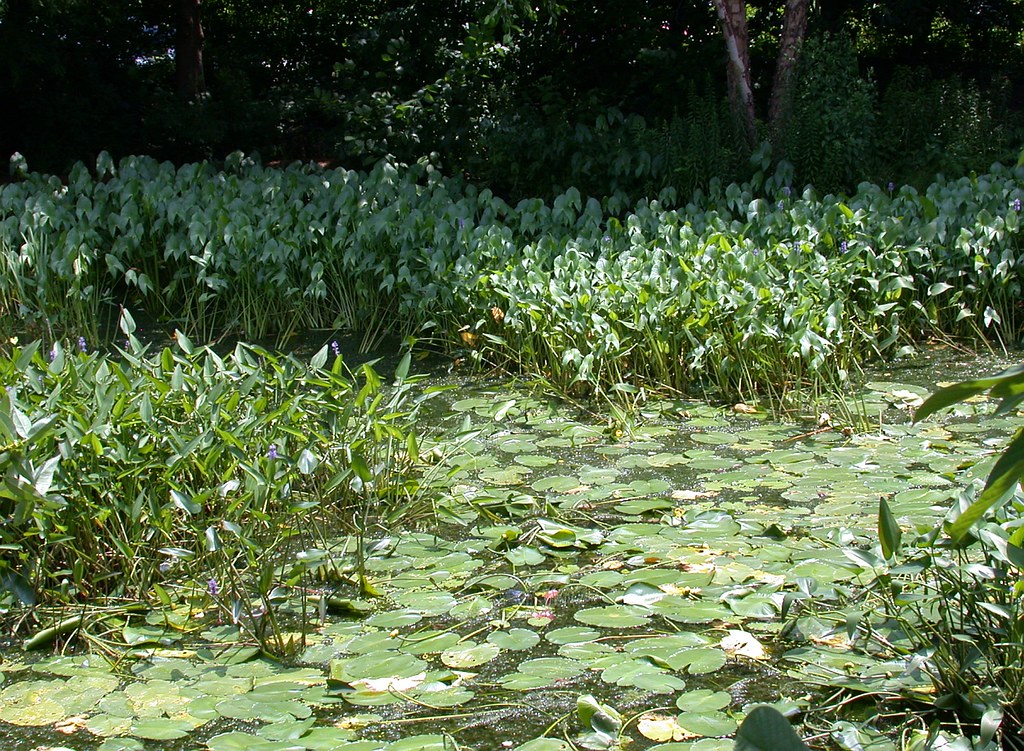
Wetlands garden
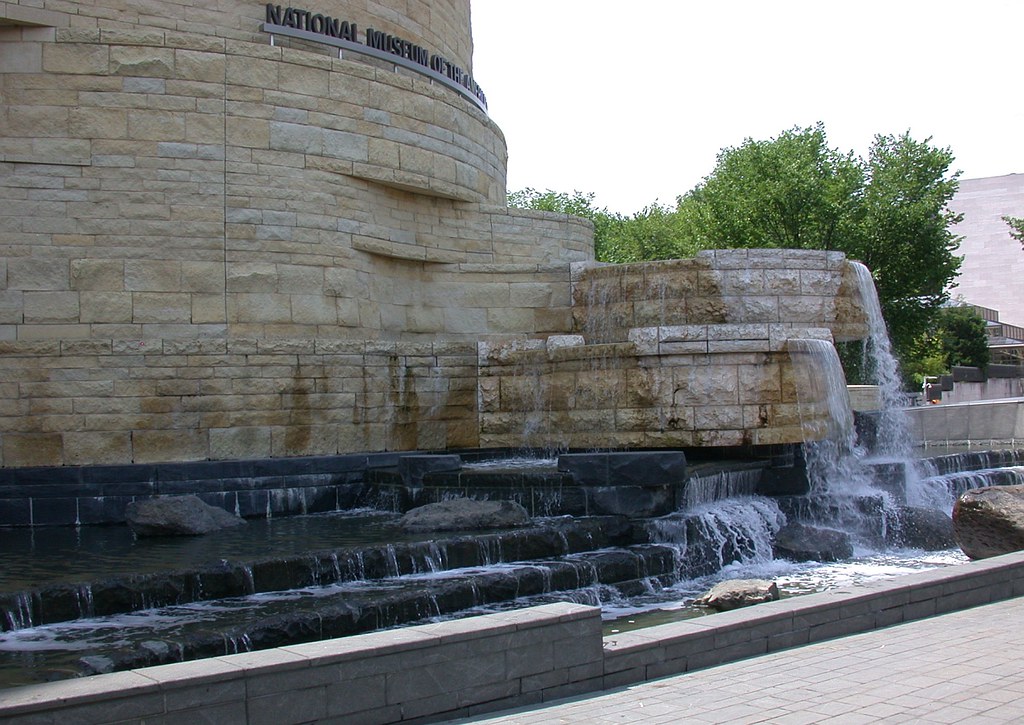
Water is used abundantly
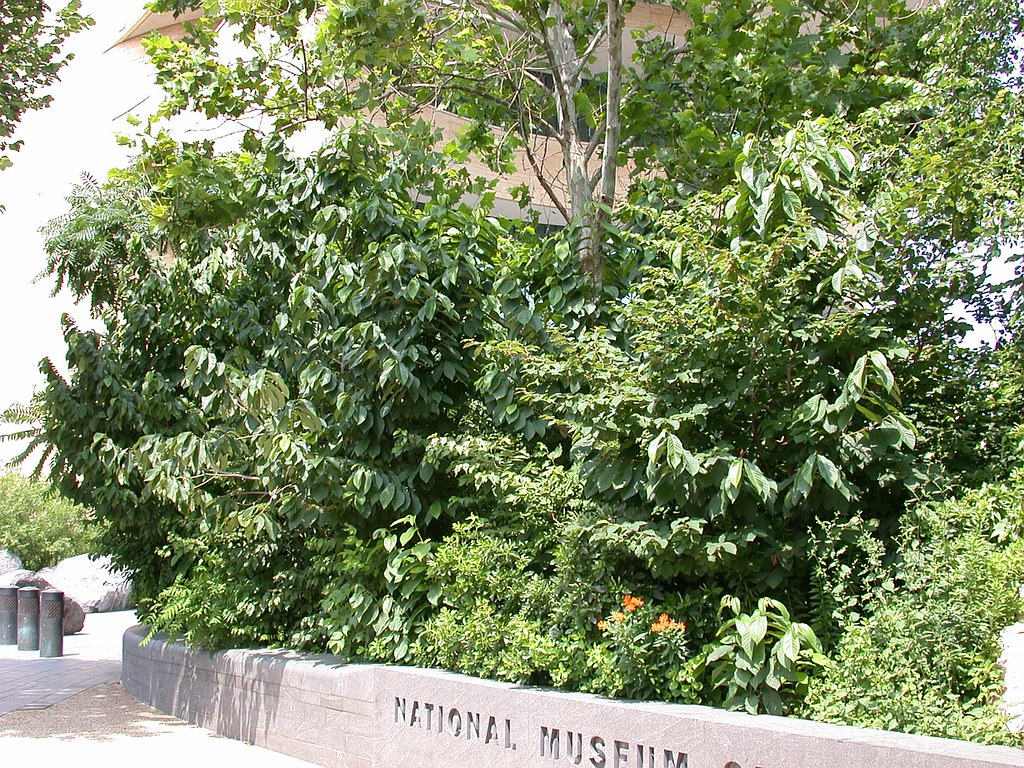
Grove of pawpaws (Asimina triloba)
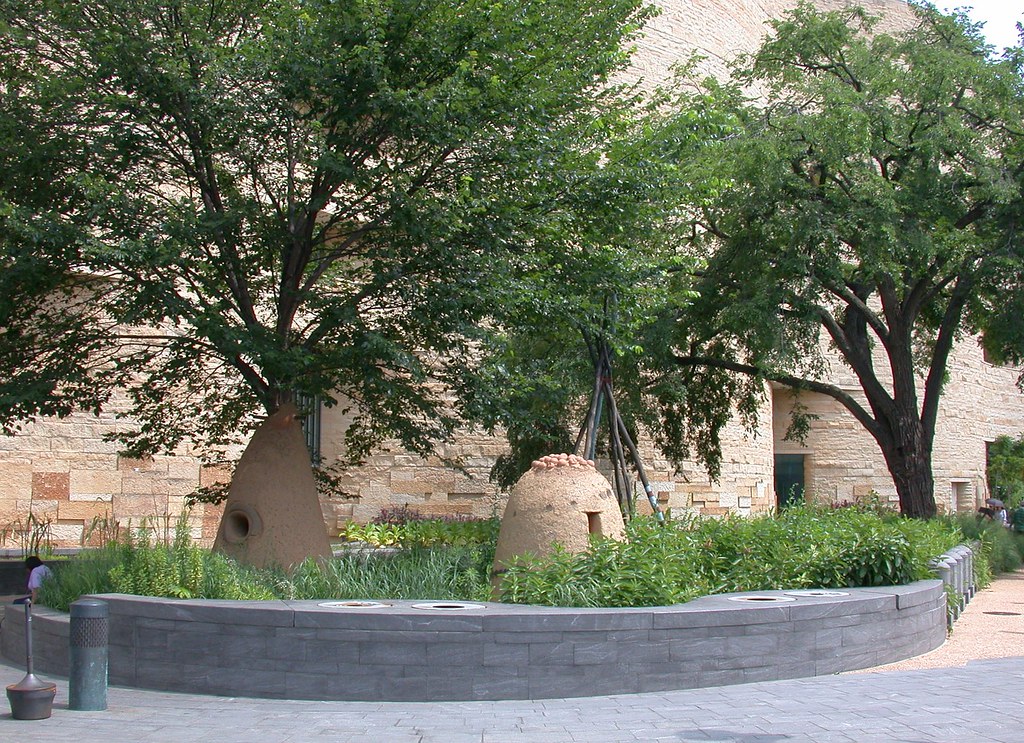
Sculptures (note tobacco growing in background)
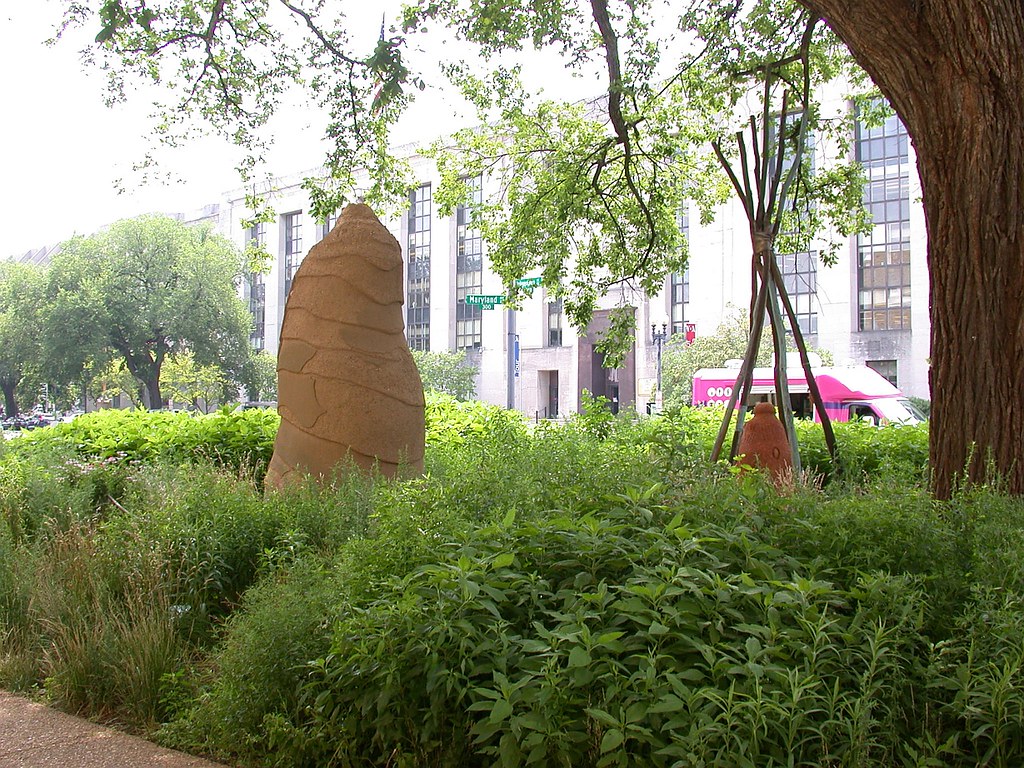
Sculpture
National Air and Space Museum (Smithsonian Institution)
The National Air and Space Museum competes with my own as the most popular of the Smithsonian's museums. But how many of its visitors notice its gardens? I stopped by the museum to check on a bed of hardy bananas and palms that were planted in 2000. Although they've never received protection, the needle palms (Rhapidophyllum hystrix) and dwarf palmettos (Sabal minor) seem completely unaffected by two cold back-to-back winters. The solitary windmill palm (Trachycarpus fortunei) suffered more damage, but is hanging on and recovering. On my way around the building I stopped to admire a crape myrtle with white flowers, probably the cultivar 'Natchez' and was surprised to find that it has nicely fragrant flowers. I also stumbled upon some nice gardens around the museum that I had overlooked previously.
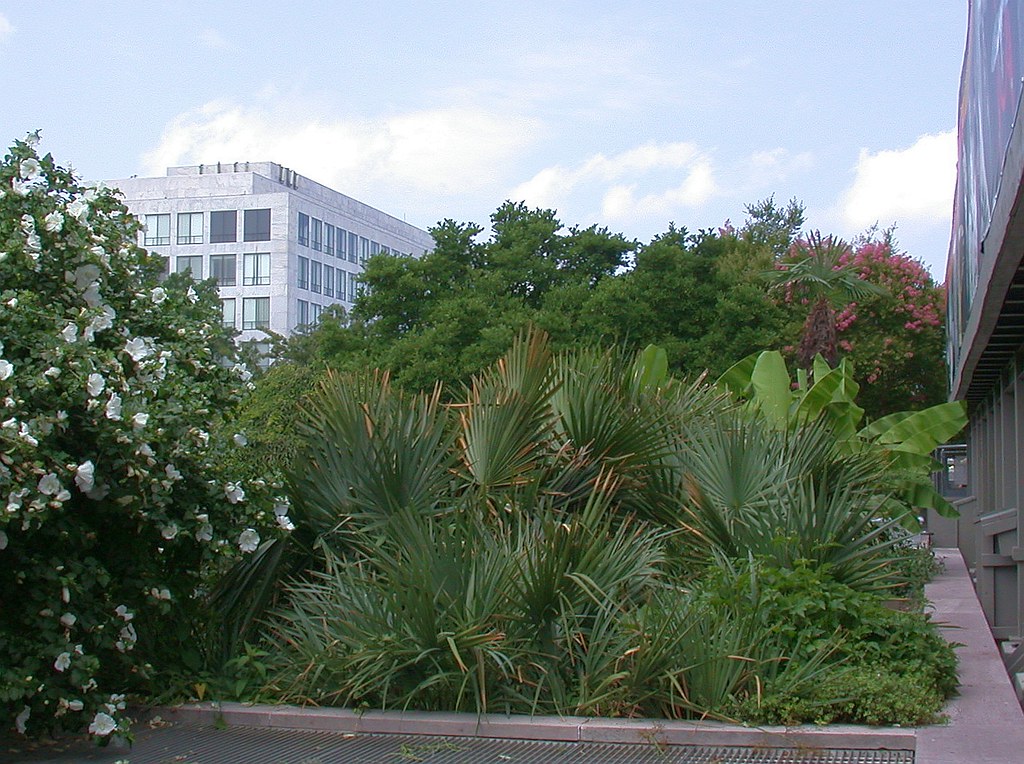
Dwarf palmetto (Sabal minor), a hardy palm
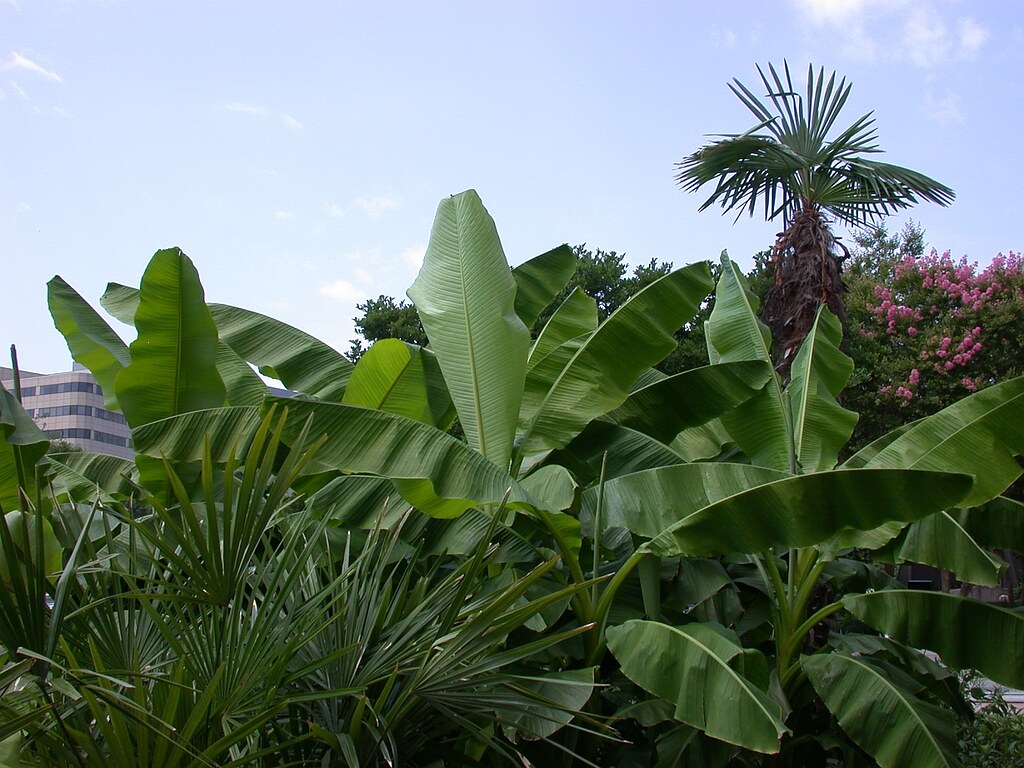
Hardy banana (Musa basjoo) and windmill palm (Trachycarpus fortunei)
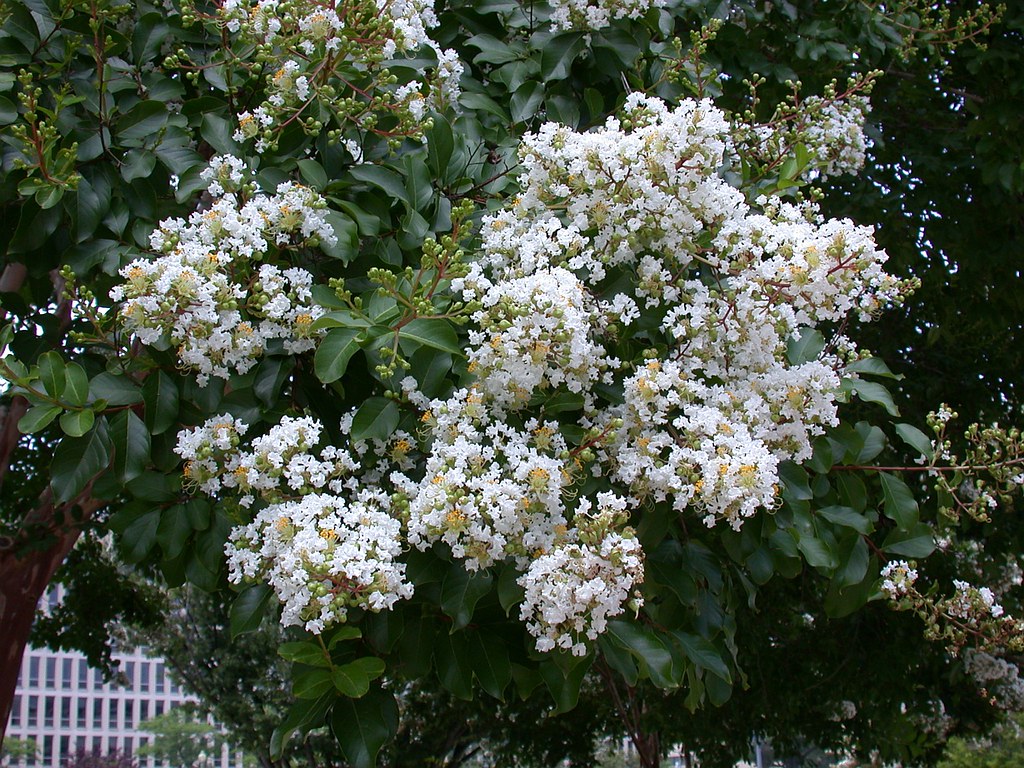
Crape myrtle (probably Lagerstroemia 'Natchez')
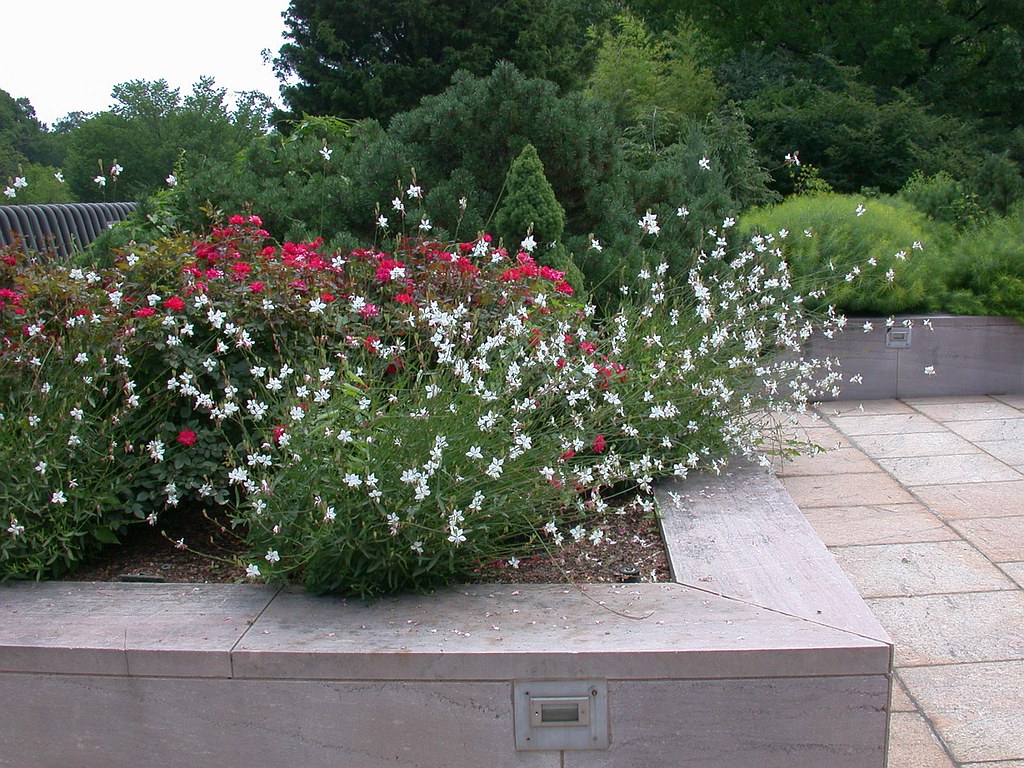
Gaura (Oenothera lindheimeri) excels in hot, sunny, exposed locations
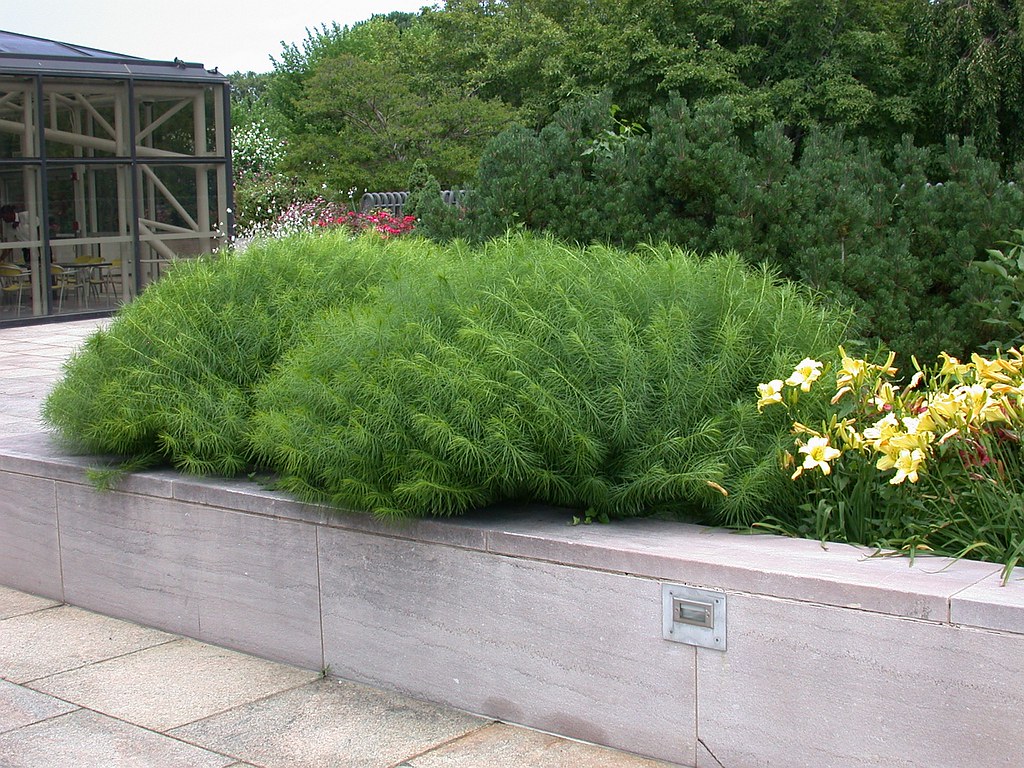
How has Amsonia been off my radar for so long?
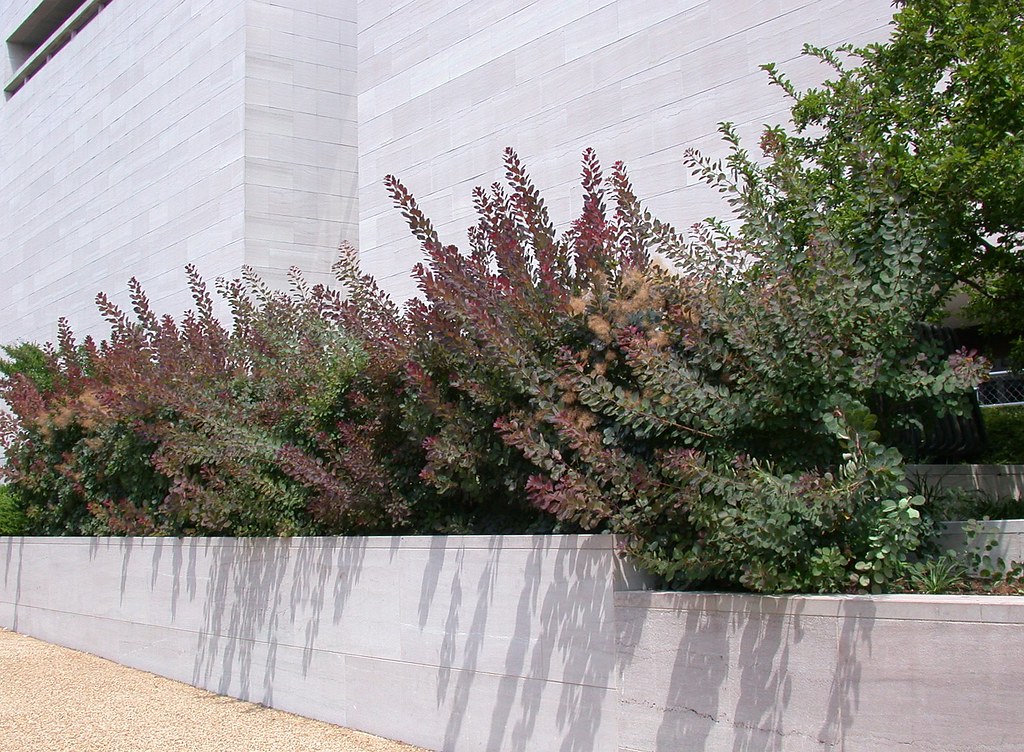
Coppiced Cotinus (smoke tree)
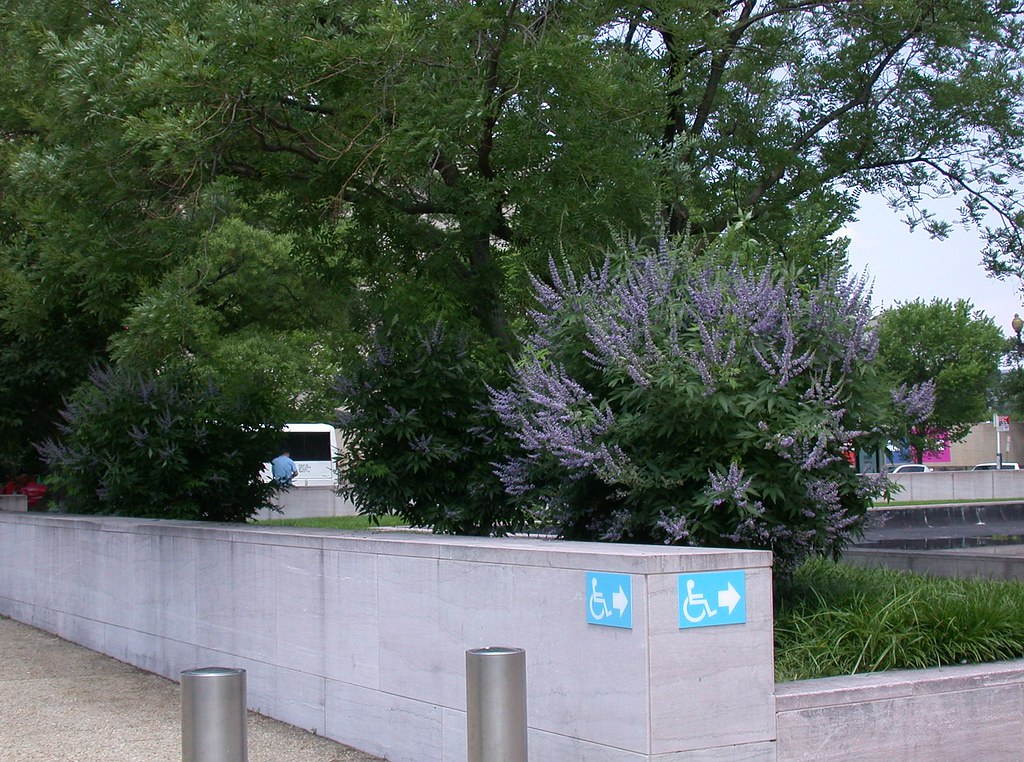
Chaste tree (Vitex agnus-castus), pollarded to shrub form
Hirshhorn Gallery and Sculpture Garden (Smithsonian Institution)
The Hirshhorn Museum's sculpture garden tends to emphasize the sculptures over the gardens, and it hasn't changed much since I visited DC as a tourist about 30 years ago, but the sunken sculpture garden is still a fun destination for first-time visitors.
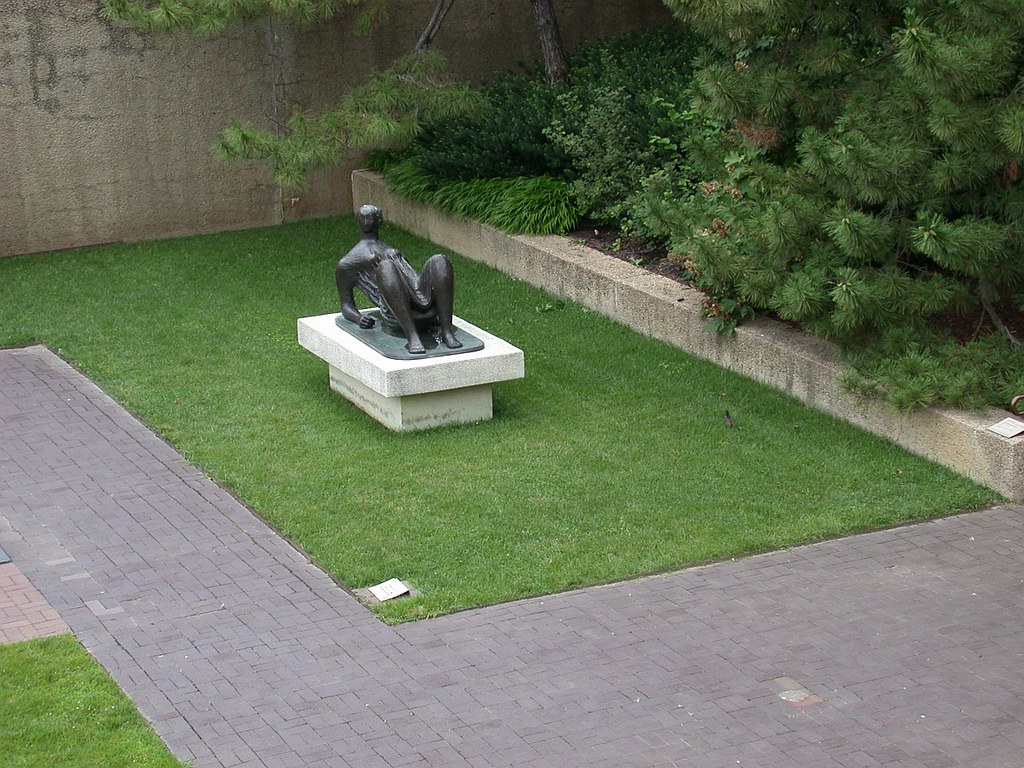
Looking down into the sculpture garden
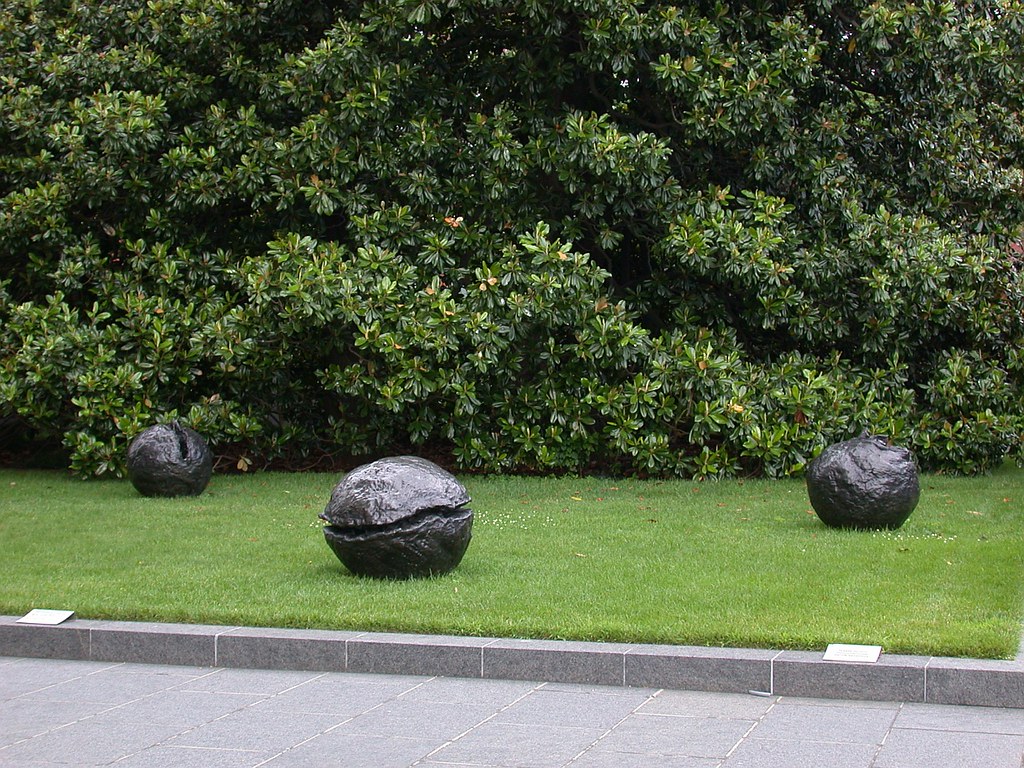
Beats me.
Mary Livingston Ripley Garden (Smithsonian Institution)
My last stop, immediately next to the Hirshhorn Museum, was my favorite garden on the Mall: the Mary Livingston Ripley Garden. I wrote about this garden last year, so for more information and photos see my blog post Smithsonian Gardens, part 2: Mary Livingston Ripley Garden. There's no attempt at naturalism here! This is a garden with a riotous assortment of plants. This is a small garden and it's easy to miss, so be sure to look for it next time you're in town!
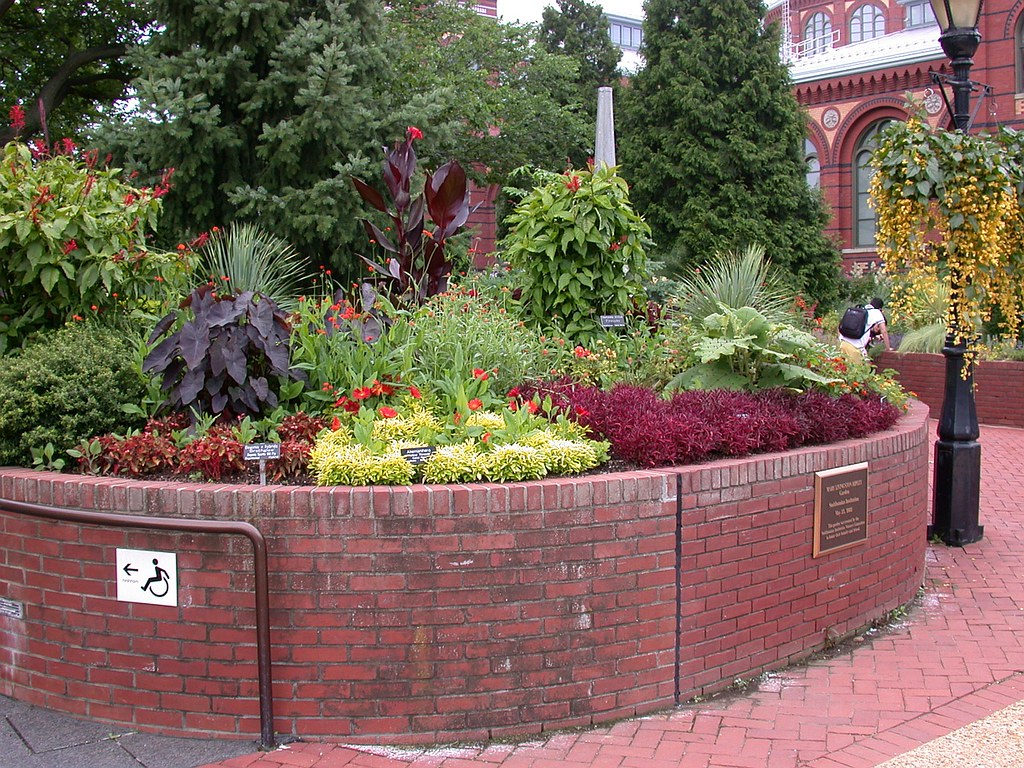
Much of the Ripley Garden is planted in raised beds
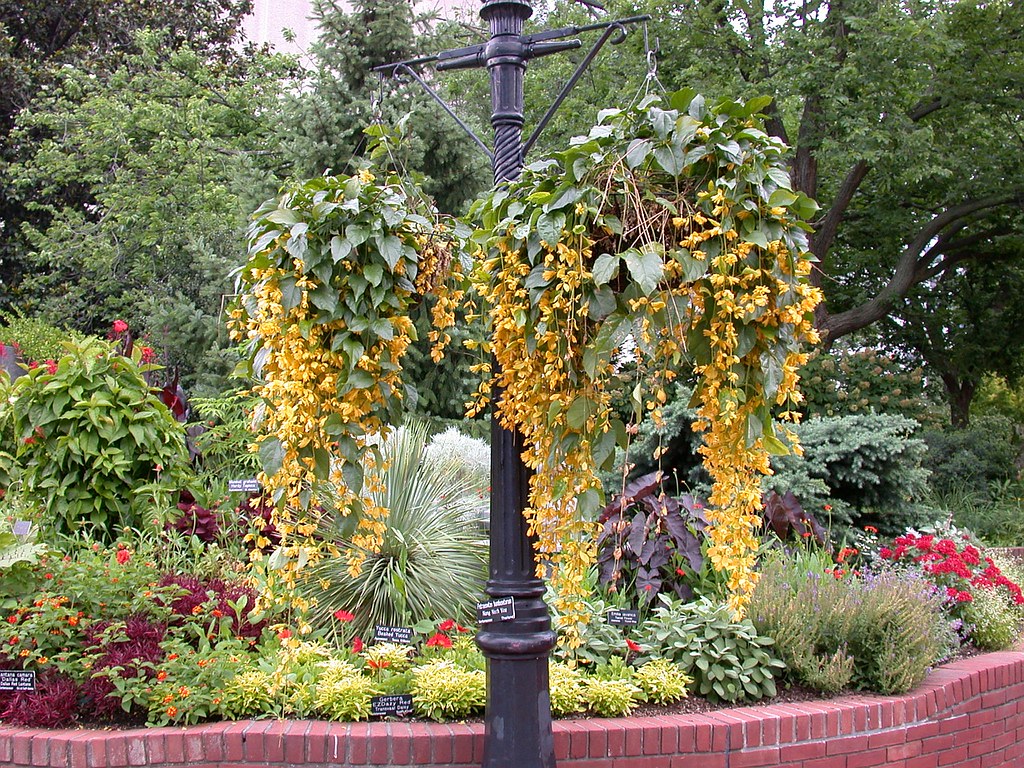
Nong Noch vine, Petraeovitex bambusetorum
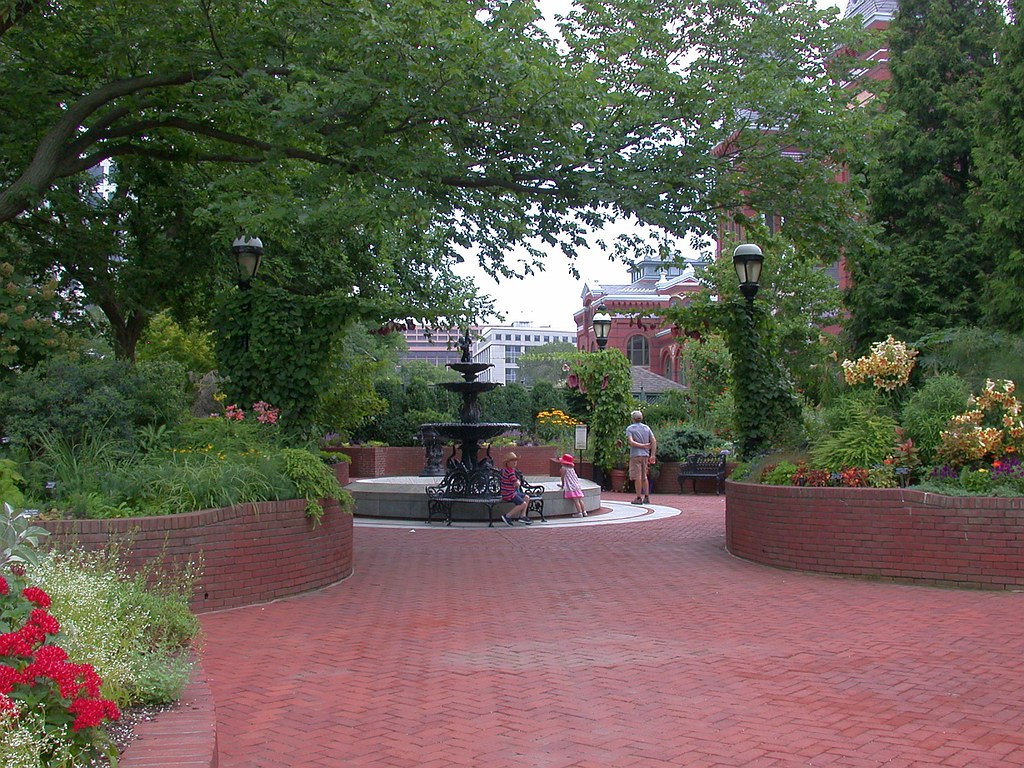
A peaceful place to relax
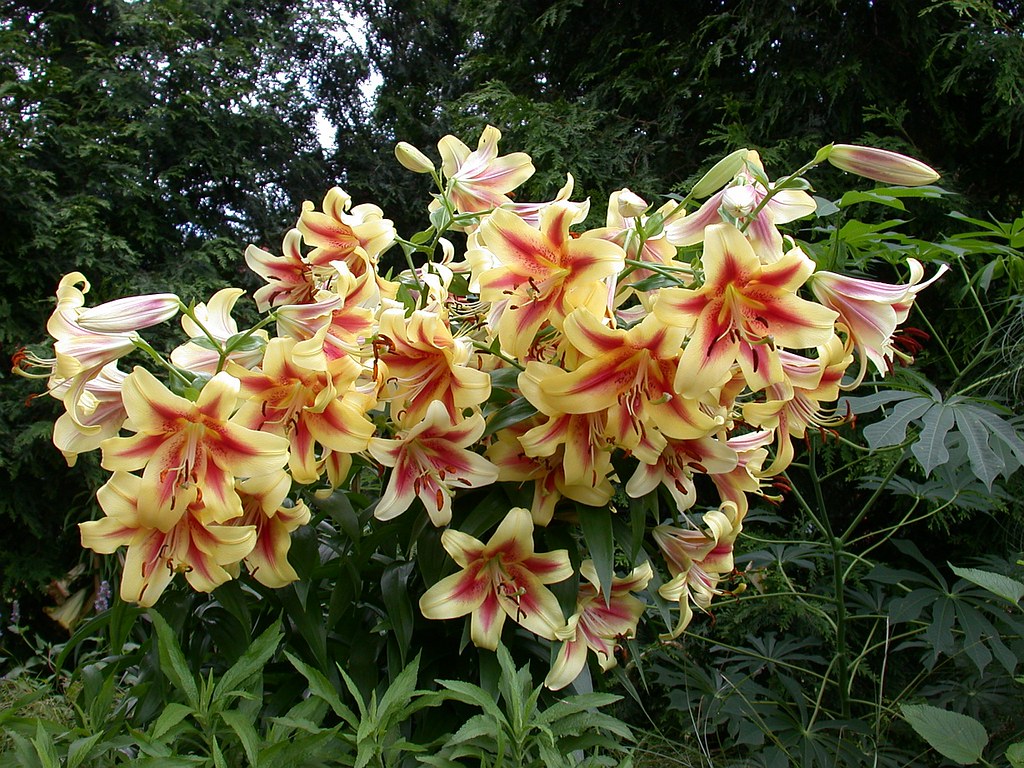
Lily season (Lilium cultivar)
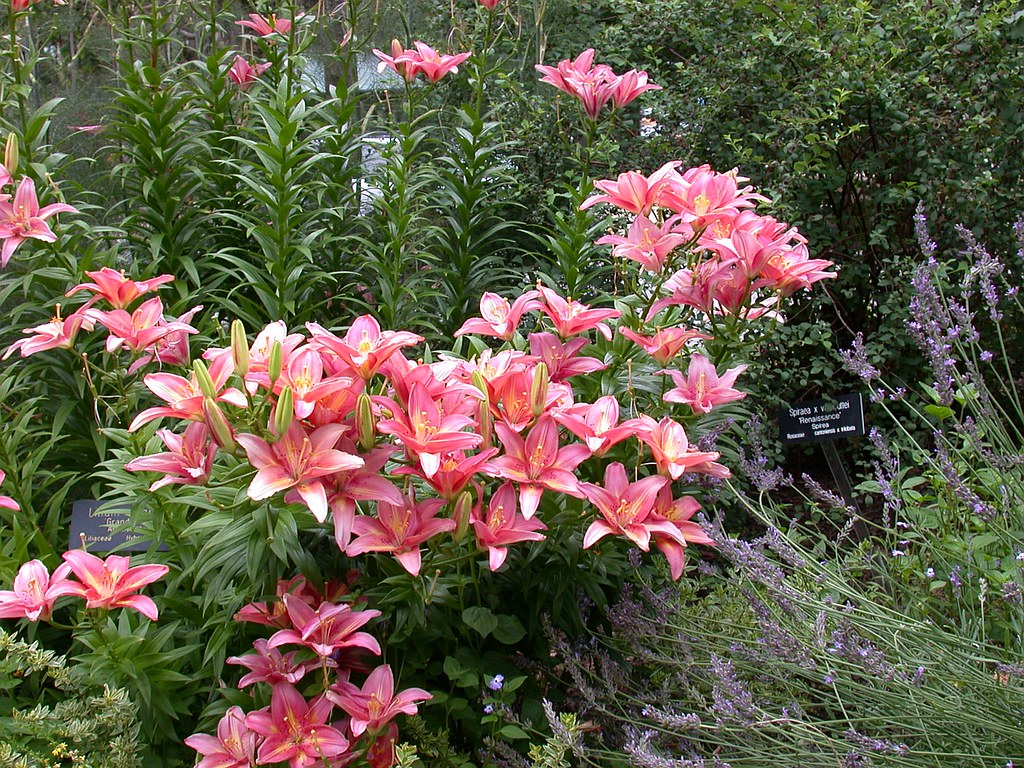
More lilies
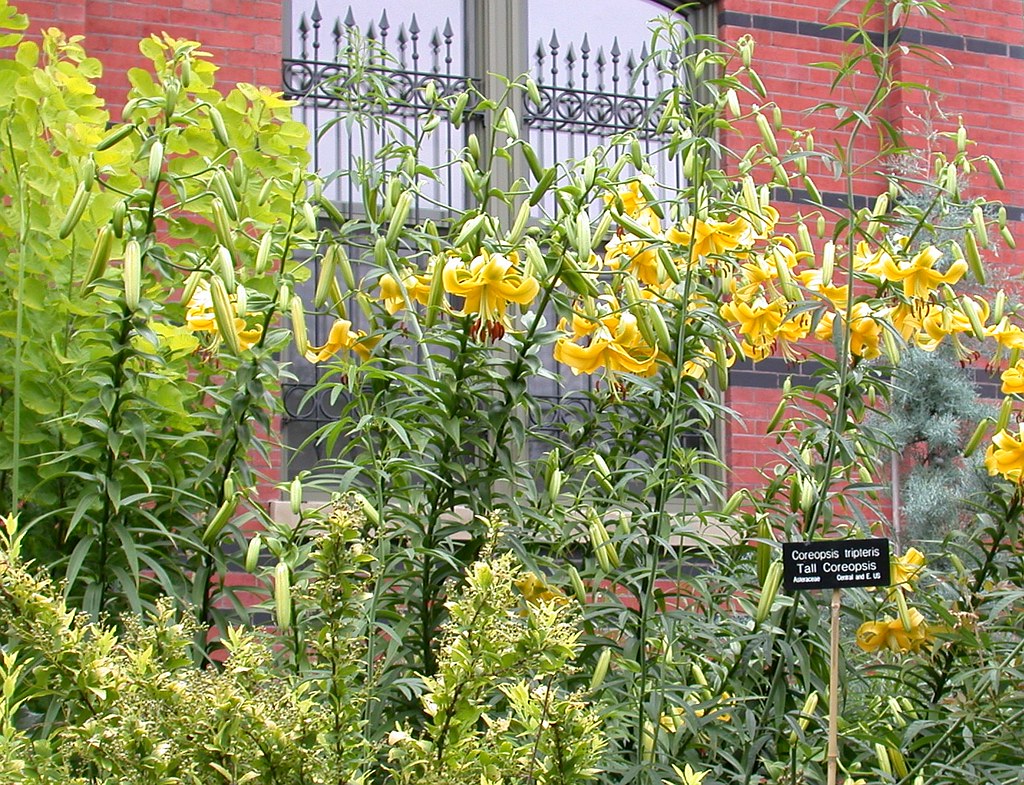
And still more lilies
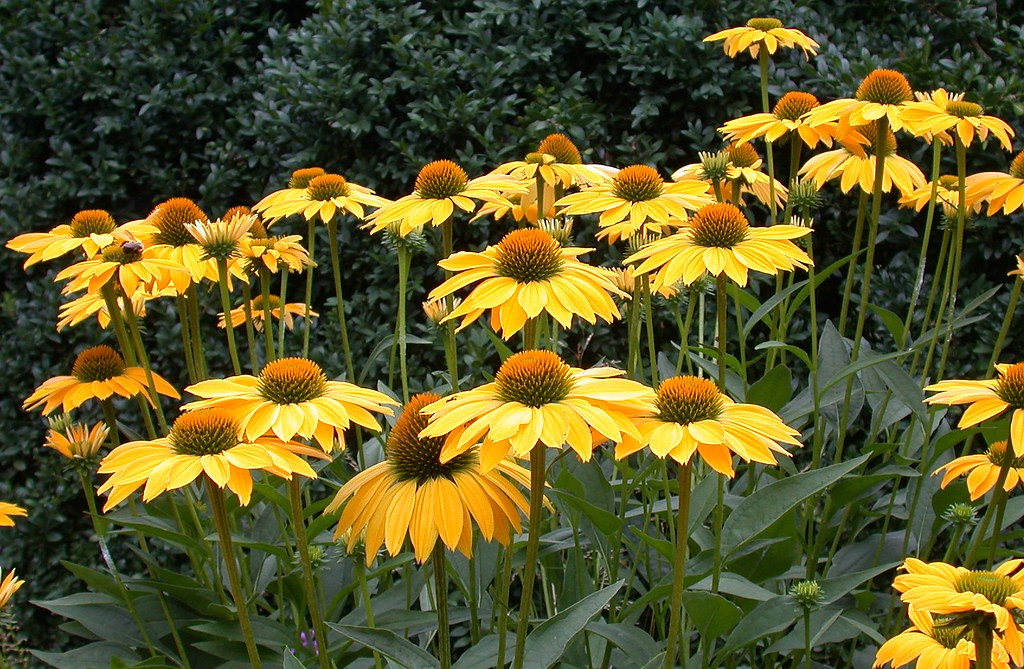
Yellow Echinacea (?)
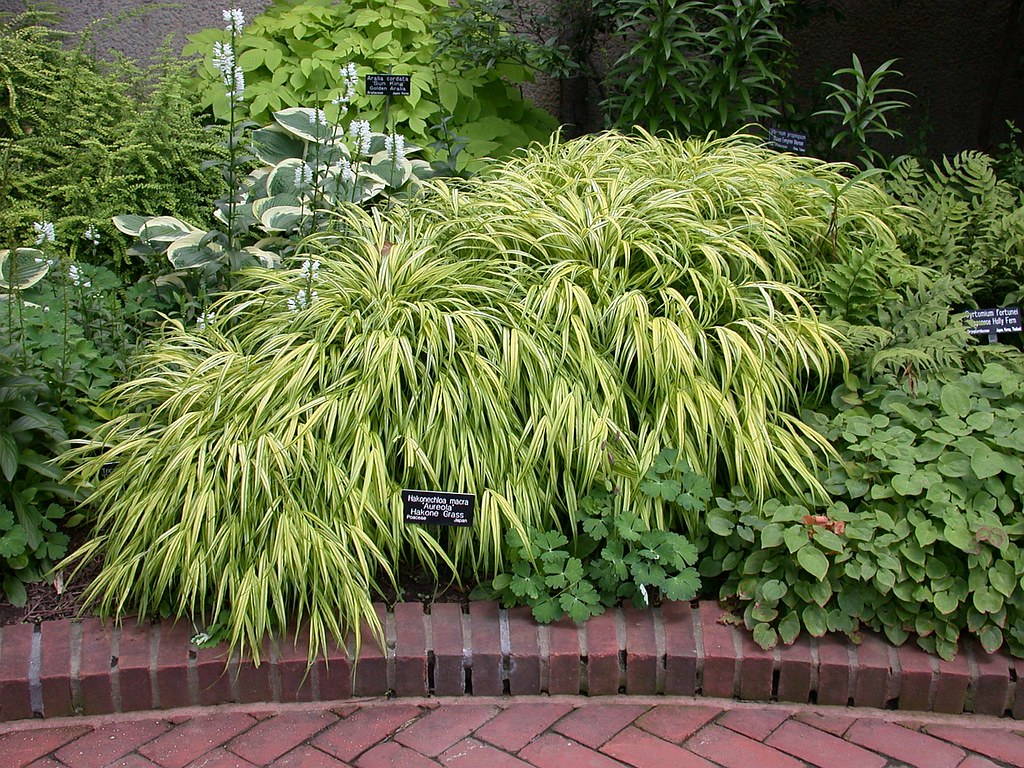
Hakonechloa macra 'Aureola'
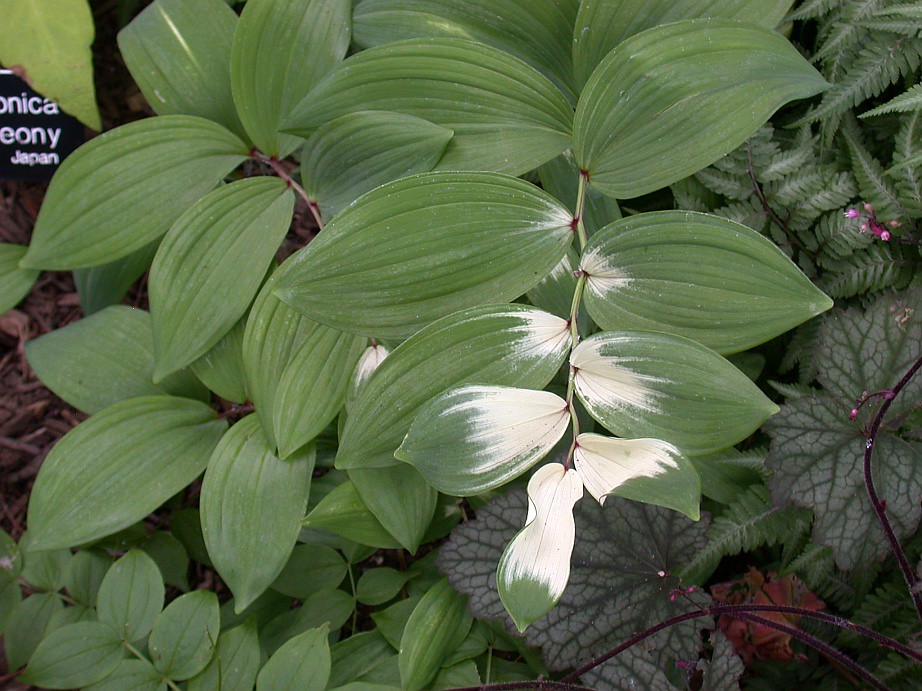
Variegated Polygonatum (?)
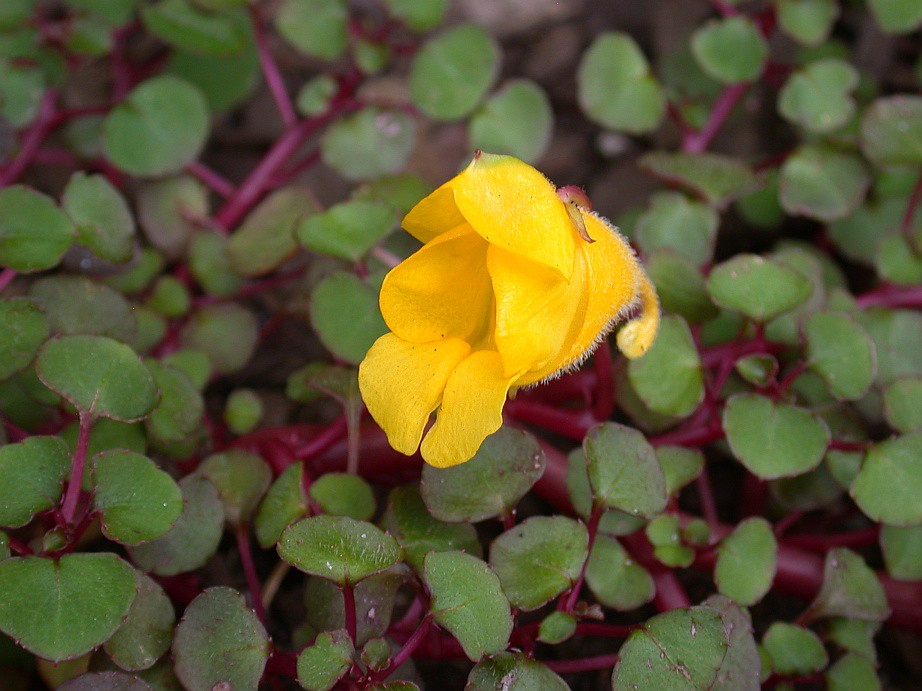
Impatiens repens, a hardy creeping species
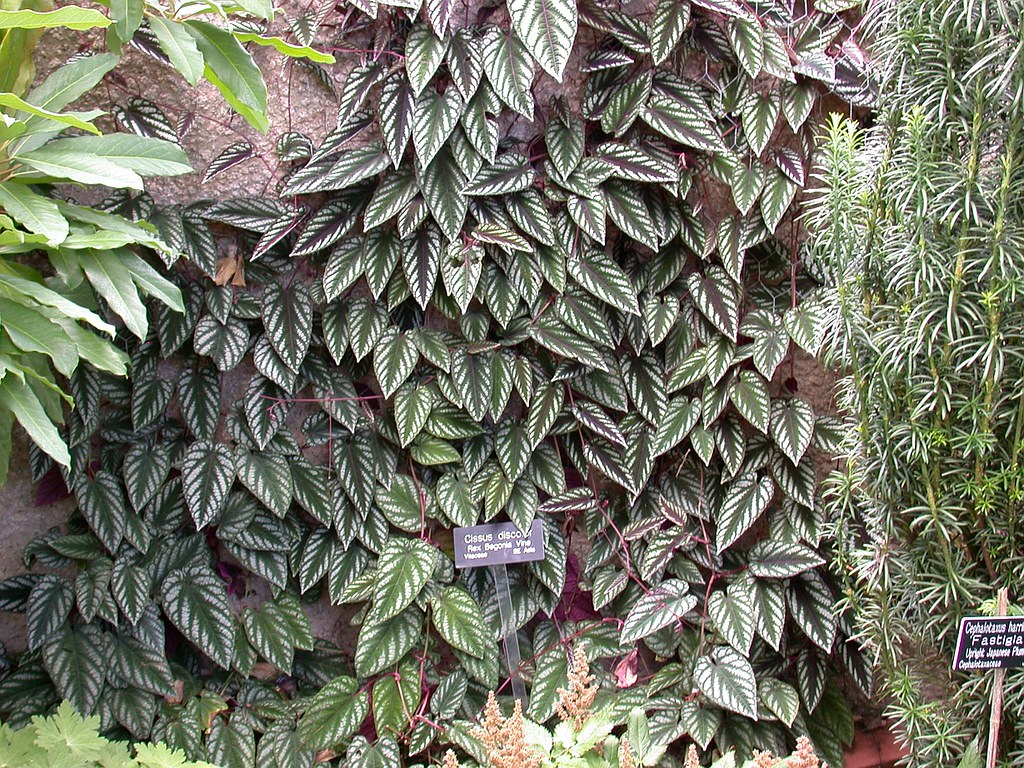
"Rex begonia vine", Cissus discolor
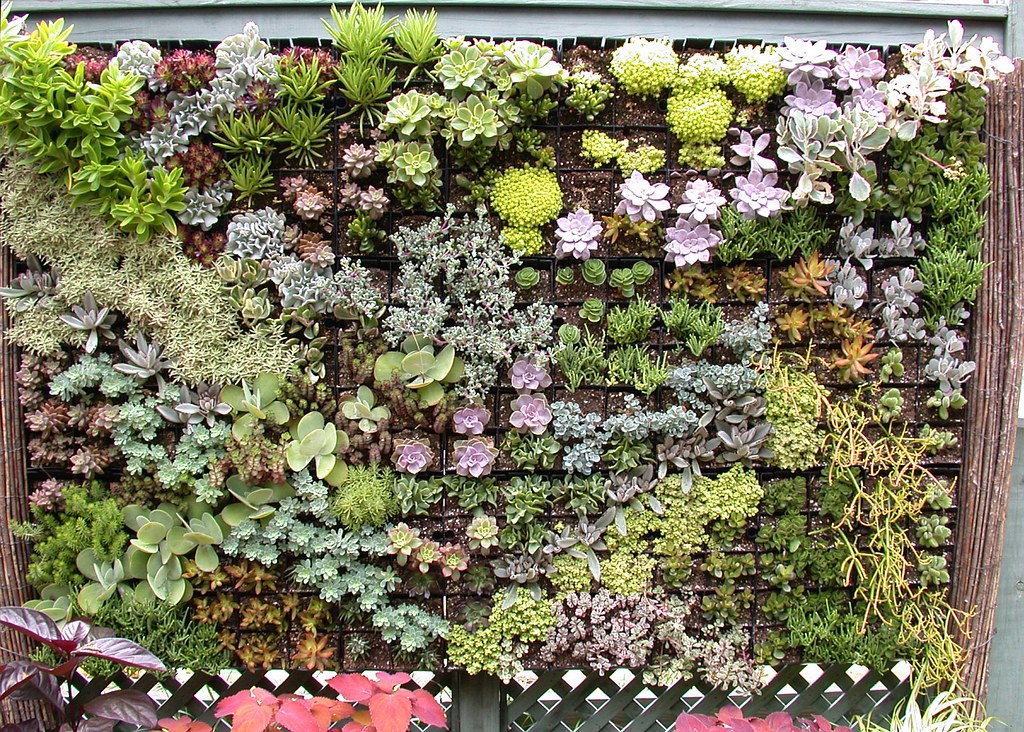
Living wall of succulents
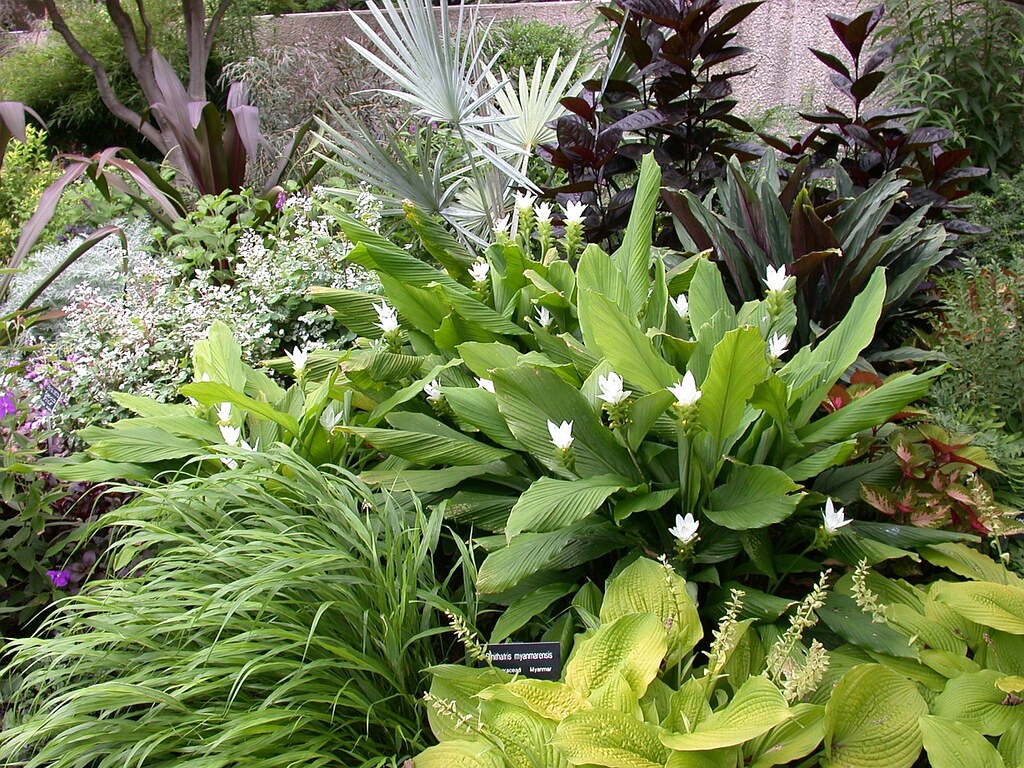 Smithatris myanmarensis, a recently described Curcuma relative from Myanmar (Burma)
Smithatris myanmarensis, a recently described Curcuma relative from Myanmar (Burma)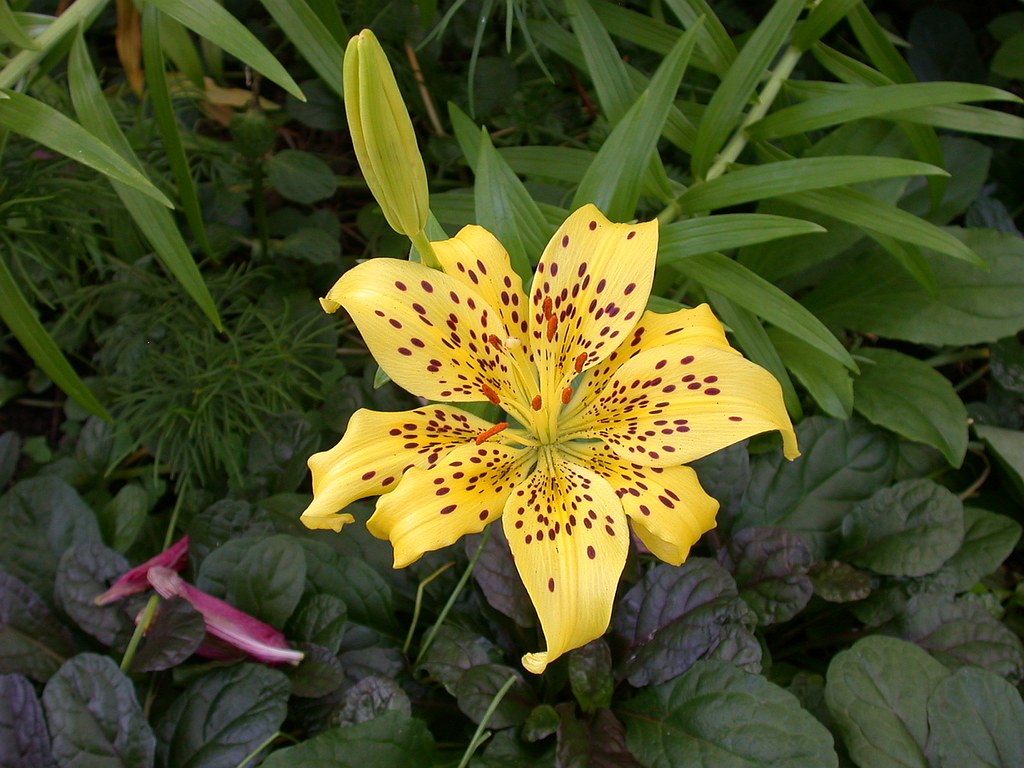
One last lily for good measure
But wait, there's more!
I wrote about several of the Smithsonian Gardens last year, but I've still only scratched the surface. There are so many great gardens here! For comprehensive information about our public gardens (including lots of great photos) please visit the DC Gardens website.
Now if only I could have one of these in my own garden...
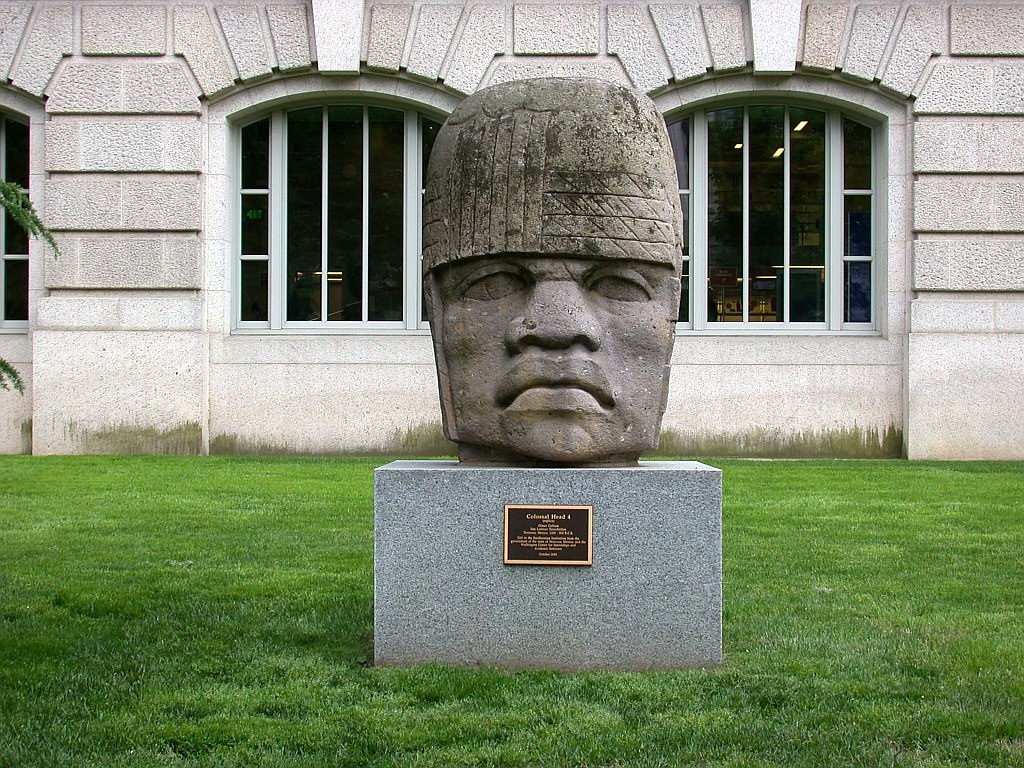
Olmec head, National Museum of Natural History
Please share this post if you love Washington, DC's gardens as much as I do!

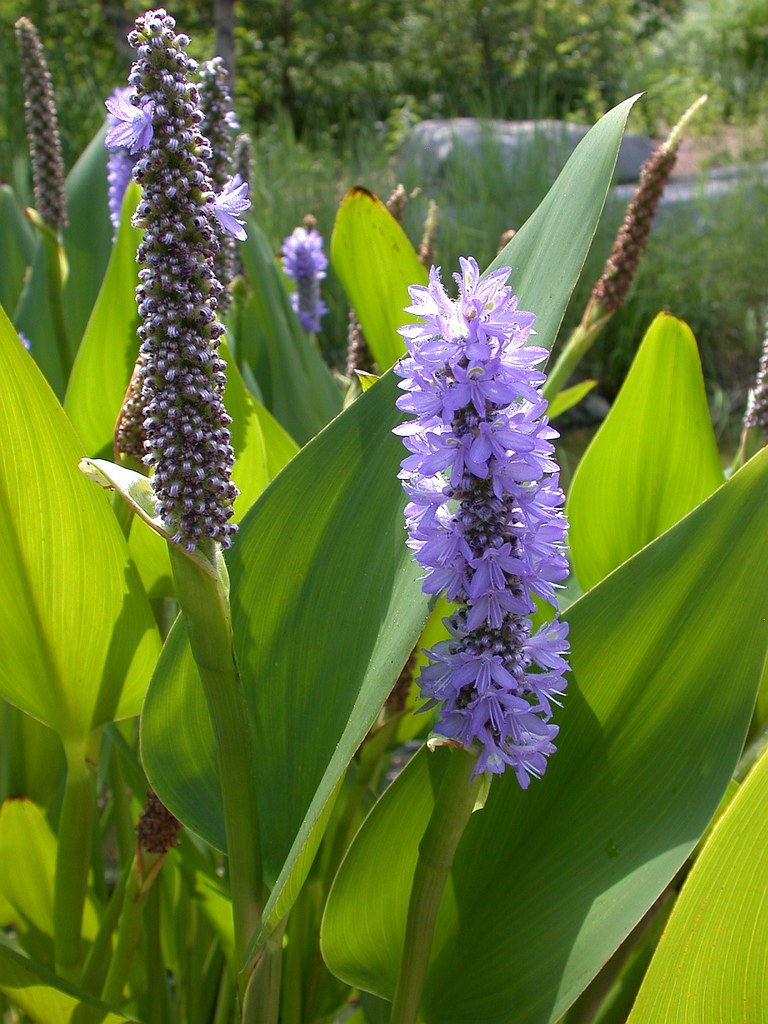
Great tour! I've never been to DC so this was an enjoyable virtual trip.
ReplyDeleteWell, you need to come visit! And be sure to look me up if you do!
DeleteThanks for the armchair tour! The Ripley Garden is my favorite of the lot, too. I didn't know that Rex begonia came in a vine variety. Interesting!
ReplyDeleteI love, love, love the Ripley Garden, and that was before I even met Janet Draper, who has only made me love it more. The "rex begonia vine" is not a true begonia, it's actually in the grape family.
DeleteThanks for the awesome pics! Makes me want to go now even more than before!
ReplyDeleteAll the downtown gardens are worth a visit if you're ever in DC.
DeleteI just sent my work email a link about the Petraeovitex vine - must have. The Museum of the American Indian was new to me on my last visit, and I admired the architecture, and lingered in its garden, despite the winter cold. You are right about that restaurant as well.
ReplyDeleteThat was completely new to me. You need to go back to the American Indian museum in warm weather--would love to meet you for lunch sometime.
DeleteJohn, loved this last summer and again now. Sharing on my FB page. Thanks!
ReplyDeleteI loved this post! I have been visiting the gardens in the area and been meaning to blog about it but have not got around to it as yet - every time I start I end up spending time looking through my pictures of the gardens :-) I do love the Enid Haupt garden as well, though I've been to it only in spring, not summer.
ReplyDelete